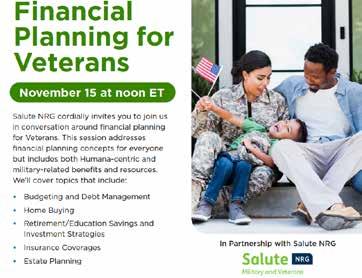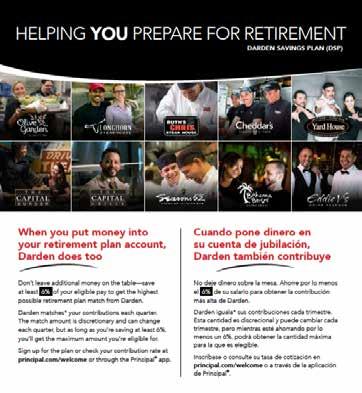For Defined Contribution Plan Sponsors
AWARDS PSCA Signature
Excellence in Retirement Plan Education
PSCA honored the winners of its annual Signature Award competition at the 2025 National Conference.
ALSO
PRIVATE MARKET INVESTMENTS
VESTING SCHEDULES AND EMPLOYEE RETENTION
MANAGING AN NQDC PLAN

18
PSCA Signature Awards: Excellence in Retirement Plan Education
PSCA honored the winners of its annual Signature Award competition at the 2025 National Conference.
by Hattie Greenan

Are Private Market Investments Right for Retirement Plans?
Rumored regulatory and political support to allow greater private market investment access—including retirement plans—thrust the issue back into the spotlight. What’s new, positive, and/or problematic?
by John Sullivan
Upcoming Webcasts: Coffee Chat with Will August 29, 2025
Roundtable: Roth Catch-Up Provision September 10, 2025



Insights is Published by
PSCA MEMBER
BENEFITS
AND RESOURCES
Conferences and Training
National and regional conferences designed for defined contribution plan administrators and sponsors.
Our must-attend events provide education from industry leaders and peer networking.
Signature Awards
Peer and industry recognition for employee communication and education.
Recognizing outstanding defined contribution programs implemented by plan sponsors, administrators, and service providers.
Research and Benchmarking
PSCA surveys: Most comprehensive and unbiased source of plan benchmarking data in the industry.
Annual surveys of profit sharing, 401(k), 403(b), and NQDC plans, as well as HSAs, created by and for members. Current trend and other surveys available throughout the year. Free to members that participate. Surveys currently available include:
• 6 7th Annual Survey of Profit Sharing and 401(k) Plans
• 2024 403(b) Plan Survey
• 2024 NQDC Plan Survey
• 2024 HSA Survey
Executive Report
A monthly electronic legislative newsletter. Providing concise, current information on Washington’s most recent events and developments.
Media Outreach
PSCA works to ensure fair coverage of the DC system in the media.
PSCA continually speaks to reporters to provide and promote accurate, concise, and balanced coverage DC plans and responds to negative press with editorials and letters to the editors. PSCA is also active on social media — follow us on twitter at @psca401k and on LinkedIn.
Washington Representation
Your direct connection to Washington DC events and developments affecting DC plans.
PSCA works in Washington to advocate in the best interests of our members and bring you the latest developments that will impact your plan. PSCA is a founding board member of the Save Our Savings Coalition that is currently working in Washington to preserve plan limits amongst tax reform.
Quarterly Magazine, Insights
An award-winning and essential 401(k) and profit sharing plan resource.
Featuring nationally-respected columnists, case studies, the latest research, and more. Providing practical and constructive solutions for sponsors.
Professional Growth — Join a Committee! For plan sponsors, administrators, and service providers.
Many opportunities for PSCA members to serve on committees, speak at regional and national conferences, and write articles for Defined Contribution Insights.
PSCA Mission Statement
The Plan Sponsor Council of America (PSCA) is a broadly based association of diverse businesses which believe that profit sharing, 401(k), and related savings and incentive programs strengthen the free-enterprise system, empower and motivate the workforce, improve domestic and international competitiveness, and provide a vital source of retirement income.
PSCA Competition Law Statement
The Plan Sponsor Council of America (PSCA) is committed to fostering a best practices environment for profit sharing, 401(k), and other employer-sponsored defined contribution retirement programs. PSCA adheres to all applicable laws which regulate its activities. These laws include the anti-trust/competition laws which the United States has adopted to preserve the free enterprise system, promote competition, and protect the public from monopolistic and other restrictive trade practices.
Editor, Director of Research & Communications Hattie Greenan hgreenan@usaretirement.org
Advertising Sales Thomas Connolly TConnolly@usaretirement.org
PSCA STAFF
Executive Director Will Hansen whansen@usaretirement.org
Senior Manager, PSCA Membership & Operations LaToya Millet lmillet@usaretirement.org
PSCA Leadership Council
OFFICERS
President Brandon Diersch, Global Financial Benefits Manager, Microsoft
Immediate Past President Diane Garwood, Horizon Bank
Directors
Joyce Anderson, GE; David Blier, United Health Group; Ann Brisk, HSA Bank; Dena Brockhouse, Kent Corporation; Chris Dall, PNC; Yvette George, Henrico County Government; Scott Greenman, The Principia; Teresa Hassara, Principal Financial Group; Sheri Melvin, Union of Concerned Scientists; Michelle McGovern, American College of Surgeons; Tom Moore, Thryv; Rose Murtaugh, International Motors LLC; Cynthia Oberland, Precision Medicine Group; Maria Quintiguia, Public Employee Retirement System of Idaho; Alexandra Richardson, Mercer; Laura Stamps, Financial Finesse; Malika Terry, NCR Atleos; Tracy Tillery, GM
Insights is published by the Plan Sponsor Council of America, 4401 N. Fairfax Drive, Suite 600, Arlington, VA 22203. Subscriptions are part of PSCA membership. Opinions expressed are those of the authors. Nothing may be reprinted without the publisher’s permission. Information contained in Defined Contribution Insights is for general education purposes only and should not be relied upon as legal advice. Contact your legal advisor for advice specific to your plan. Copyright ©2025 by the Plan Sponsor Council of America.
by Hattie Greenan






Peer Reviewed Participation
Using current plan participants to spread the word about your plan through employee testimonials or business resource groups may help boost plan engagement.
IF I AM LOOKING TO PURCHASE A NEW VACUUM, HIRE A HANDYMAN, OR TRY A NEW RESTAURANT, chances are good I am looking up options online and reading reviews. If a product or company has no reviews, I am pretty likely to skip it in favor for something that is tried and true.
In a culture of Amazon reviews, social media trends, and neighborhood apps, we know that peer influence helps change or promote certain behaviors. So it is not surprising that we are seeing an increase in the use of plan ambassadors, financial wellness champions, and co-worker testimonials to help promote retirement plan participation. In facing the challenge of educating employees about benefits, saving for retirement, and overall financial literacy some organizations are looking at current plan participants to help spread the word. Several of this year’s signature award winners, highlighted in the cover story, used this approach with great results. Leveraging business resource group or affinity groups is a great way to execute this approach as employees may be more open and trusting of information received from peers.
In this issue’s Perspectives article, plan sponsors weigh in on education challenges and success. Some organizations have a lot of resources and provide all the programs to employees while others mostly provide communications from providers – both indicate that engaging employees with the material is a challenge, whether they offer programs with all the bells and whistles or not.
In this issue’s article from our education and communication committee, Jennifer Benford Seibert discusses her WATER concept for promoting total rewards that she presented at the National Conference. Employees often think of their base pay as their total compensation from their employer, but the cost of benefits can add upwards of thirty percent to their total pay in value. Ensuring that employees know the total value of everything provided by the organization can help increase their engagement, but also help them appreciate and take advantage of the benefits you work so hard to cultivate.
Breaking through the email clutter and the increasing amount of content that people consume daily to help them understand and take advantage of their benefits is an ongoing challenge – and likely always will be due to the nature of the task – plan sponsors are and will continue to meet that challenge in small and big creative ways.

Hattie Greenan is the Director of Research and Communications for PSCA. .


WELCOME
NEW & RECENTLY CREDENTIALED MEMBERS!
CORPORATE MEMBER
Primark Benefits
San Mateo, CA
Industry: TPA
Contact: Gregg Rubenstein
CERTIFIED PLAN SPONSOR PROFESSIONALS
Deneen Aceto
Youth Villages
Cristina Aguilar
Total Package HR
Stacy Aldrich
The Aagard Group, LLC
Brian Allen
Dynamic Systems Inc.
Marlene Andrews
Western National Parks Association
Raelene Ashbaugh
Wilson & Company, Inc.
Jessica Ashe
Kellan Restaurant Management
Roni Austin
Hardwood Products
Julia Austin
Baird
Korinn Bajmoczi
Corteva Agriscience
Amanda Baker
LKQ Corporation
Janet baloochestani
AlpHa Measurement Solutions
Stacy Barber
Bell Partners Inc
Billie Barnett
Peoples Exchange Bank
Rapa Barsel
Trusted Doctors LLC
Valerie Beauduy
Cambio Communities
Mary Ann Beil
Memphis Zoological Society
Mari Jean Bellander
St Peter’s Health
Julie Berger Dewpoint LLC
Kimberly Blanc Disability Rights CA
Marisol Blancas
Hunter Industries
Angela Bohne Ionbond, LL
David Boilard
Ebara Technologies, Inc.
Jeannine Boisvert
High Point Treatment Center
Sharon Boston
Transamerica Retirement
Kimberly Boyer
Lomont Molding LLC
Michael Boyle
Mainstream Engineering Corporation
Kelli Bracho
Heartland Food Products Group LLC
Megan Bradbury
TradePending, LLC
Stephanie Brady
HJ Baker
Heather Brady
BE&K Building Group
Eden Braun GMH Associates, Inc.
Melanie Browning
Southern Legacy of Life
Ann Bruner
Burlington Capital LLC
Jennifer Butler
PV Fluid Products, Inc.
Annette Calhoun
Seven Counties Services
Melissa Candida
UNIBANK
Stephanie Capps SourceAmerica
Priscilla Caracter
PNP Pediatrics LLC
Olivia Carson PTC
Mila Castello
ADC Therapeutics Inc
Sarah Cecil
Southern Highlands Community Mental Health Center
Adrienne Charles AVMA Life Trust
Marcy Clark Prevea
David Clark
Arcus Biosciences
Tara Clontz
UNARCO Material Handling, LLC
Ed Colby
Dibble
Theresa Conley
Ferguson Enterprises
Theresa Conley
Ferguson Enterprises
Michaella Cooke
Gentiva
Tonya Coy
Cayuga Health System
Keydotta Crawford Cayuga Health System
Charles Crespo
Milrose Consultants LLC
Samantha Dailey
The Suter Company
Shantel Dashiell
OneDigital
Corey Davis
Wellstar Health System
Dirk de Freitas
SBA Communications Corporation
Jennifer DeBrincat Easterseals MORC
Todd DeCourcy
Thomas Road Baptist Church
Marisela DelaCruz
Post Investment Group
Shaughn Dermody-Cadieux
Accu-Time Systems, Inc.
Darlene DeRosa Houghtaling
Team Penske
Jennie Dillon
Central Bank
Bianca Duna
Smalley Steel Ring
NEW & RECENTLY CREDENTIALED MEMBERS! WELCOME
CERTIFIED PLAN SPONSOR PROFESSIONALS
Roberta Dyer
CNH
Joshua Dykes
INVO PEO
Erin Elder
Nesnah Ventures
Cathy Emerson
Encore Electric Inc
Laci Enslin
FPT Corporation
Carrie Eudy
Westrock Coffee
Alexis Fettig
Other
Lynda Finley
Endurance Lift Holdings, LLC
Mark Fiore
JA USA
Haley Fletcher
Engineered Floors, LLC
Tamara Follett
Upper Lakes Foods
Gayla Fowler
RedCastle Resources
Kathleen Franklin
Lacerta
Jessica Friendshuh
Schreiber Foods
Kayla Frye
Ward Transport & Logistics Corp
Cathleen Fucci
Osteoid, Inc.
Margaret Fuss
Medallion Dental Laboratory
INC
Marcy Gallea
Wenger Corporation
Tim Genovese
Glen Raven, Inc.
Ross Giffin
Orange County’s Credit Union
Alexis Giltner
Pride Transport, Inc.
Lisa Gladysz
Accu-Time Systems, Inc.
Kelly Glassner
Blancco Technology
Karen Goldbeck
Nesnah Ventures LLC
Damarie Gonzalez
UniTek Global Services
Sandra Gonzalez Stratus
Seida Gonzalez
Studio Movie Grill
Jamie Gordon
Hubbell Realty Company
Kymberlee Gore
Rotork Controls Inc
Mary Gould
Custom Control Manufacturer of Kansas, Inc.
John Greene
Greylock Federal Credit Union
Linda Hackleman
Trellis Company
Melissa Hackley
Hagie Manufacturing Company
David Haislip
Blackwood of DC Holdings. Inc.
Shana Harmon
Coushatta Casino Resort
Whitney Harris
RAM Aviation, Space & Defense
Angela Hartley
Tom Barrow Company
Tiffany Hausner
Allpoints Services LLC
Amy Heldt
Whitfield & Eddy
Michelle Henry APV
Alejandro Herrera Rivas
FirstService Residential
Susan Hever PPHP
Vicki Hogan
Cleveland University - Kansas City
Emily Hoke
Larkspur HR Consulting LLC
Richard Holcomb
Memorial Healthcare System
Eric Holland
Tindall Corporation
Katrina Hopping
CAMPUS USA Credit Union
Melissa Huber
Chapman Automotive
Laura Hutzler
Nesnah Ventures
Uyen Huynh
Scarlet Pearl Casino Resort
Michelle Hytry HR Renovations
Justin Ingerham Trestlewood Pediatrics
Christine Jenkins
Warren County Water District
Fallon Jernigan
South Plan Community Action Association, Inc.
Kim Jessup Flix, Inc.
Shelby John Enderwitz Central Bank
Melissa Johnson Carter BloodCare
JoLen Jolly Diamond Bank
Sarah Jones
Pardes Jewish Day School
Kaylee Jordan Quad
Shanyce Joseph Aquent LLC
Mailyn Juhlin Kolbenschmidt Pistons USA, LLC
Suzanne Kanter
People Results
Reagan Karlowicz Rotork
Stephanie Keen G&A partners
Laurie Kelly America’s Credit Unions
Shawn Kennel
Kirby Foods Inc.
Ashley Kennison
Norton Healthcare
Jesse Kim
Alcoa Corporation
Kim King
Blueprint Studios
Matthew King
Unarce Material Handling LLC
Dana Kittendorf
The Benjamin School
Christine Knight Acelero, Inc
Andrea Kokott
Steinhafels, Inc.
Rock Kuchenmeister
K/E Electric Supply Corp.
Arriel Kudela
Zurn Elkay
Kathryn Lang
Johnson & Quin
Anna Langdon
LivePerson, INC
Marie Lara
ITC Manufacturing
WELCOME
NEW & RECENTLY CREDENTIALED MEMBERS!
CERTIFIED PLAN SPONSOR PROFESSIONALS
Rachel Lathy Third Coast
Sarah Laurent
Schreiber Foods, Inc.
Katrina Lawson
Gray Construction
Bonnie Lee
Minghua México California, Inc.
Marika Lemmons Connections Health Solutions
Kathryn Leppert
Members First Credit Union
Mary Ann Lewis
Cosco Shipping Lines (North America), Inc.
Richard Lewis
Coca Cola Bottlers Sales and Services
Marley Lilley
Rosedale
Lauri Lipka
Barr Brands International
Candice Lock
ICD Holdings LLC
Denise Logue
Axos Bank
Moira Long
Mann Eye Institute
Ashley Low
MGP Ingredients
Erin Lowden
Danone
Heidi Lybarger
Nine 30 Consulting, Inc.
Philippe Ma
Liberty University
Lynnell Machernis
Statek Corporation
Jane Mansfield
FirstBank
Alycia Marandola
Westerly Community Credit Union
Kalyn Marshall Camillo Companies
Sammie Marth Alsay Incorporated
Rachel Mastriano Canusa Hershman
Stephanie Mauceri Engage PEO
Sherry Mazorra
Palm Beach County Sheriff’s Office
LaShawn McArthur Emser Tile LLC
Cassie McBee
Gwinnett County Government
Elizabeth McCabe
Smalley Steel Ring Co.
Evelyn McCarthy BankProv
Elizabeth McCredden Ovation Holdings, Inc.
April McIntyre
Mario Sinacola
NaShanta McQuay
Unity Healthcare, LLC
Traci Merrell
Thomas Road Baptist Church
Seth Mertz
Liberty University
Anna Metnick FoodCorps
Whitney Mitchell Fulwell Entertainment
Gina Montesonti
Junior Achievement USA
Phillip Morris
Thomas Road Baptist Church
Rebecca Morrow
HigherVisibility
Sharon Moses Wellstar Health System
Tambre Moten
Cy-Fair Fire Department
Sarah Nash
Catalina Marketing Corporation
Nichole Neuendorff
Citizens State Bank
Katie Newton
Prime Capital Financial
Steve Nguyen
Precision Drilling
Gregory Norum
Shimizu North America LLC
Kimberly Noyes
Littleton Coin Company
Jessica Olbricht
Biodesix Inc
Melissa Olsen
ReSource Pro
Joseph Ortiz
Walton Isaacson, LLC
Daniel Ortiz Moreno
Boot Barn
Alexis Palise
Dewpoint LLC
Jacqueline Pardo
Wurth Group of North America Inc.
Robin Parker
San Diego County Office of Education/Fringe Benefits Consortium
Tina Pauluzzi
Glen Raven, Inc
Matia Person
Sanford Health
Angela Peterson
Southern Highlands Cmhc Inc
Michelle Pleet
Renaissance Learning, Inc.
Elizabeth Pollock
The Emmes Company LLC
Jacqueline Portillo
University of Southern Califronia
Jessica Powell
Gray Construction
LeNorris Price
Wellstar Health System
Lori Pryor
Genesis Connected
David Pulford
DART
Rachael Pullman Versaterm
Kathryn Purcell
A2 Global Electronics and Solutions
Jennifer Pysczynski
GoDaddy
Marilyn Quinones
Coca-Cola Bottlers’ Sales & Services Company
Jordan Raver
Mesh Systems
Hannah Rego
Cardinal Glass Industries, Inc.
Terese Reilly
Reynolds Consumer Products
Jonah Resch
Mapletree US Management LLC
Ceri Richards
Altria
Melissa Riggs Hoosier Energy
Sara Riorden
Alter Trading Corporation
Ericka Robinson
ISTH
Sarah Rogers
Easy Step Enterprises, LLC
Marissa Rosado
Johns Hopkins
Anissa Rose
Jesuit Volunteer Corps
NEW & RECENTLY CREDENTIALED MEMBERS! WELCOME
CERTIFIED PLAN SPONSOR PROFESSIONALS
Robin Sabbarese
Commonwealth Rolled Products, Inc.
Eric Salyers
Wound Pros Management Group, Inc.
Dale Santos Cooke School and Institute
Tammie Sauber
University of Kansas Health System
Mary Scarbrough
True Environmental Holdings LLC
Jill Schmidt
Southern Farm Bureau Casualty Insurance Company
Tracy Schnieders Enclos Corp
Lissa Scott
Allied Universal
Leslie Serrano Provident Bank
Antwoine Shepard
FSG, Inc.
Lisa Sheppard
Cayuga Medical Center
Claribel Simancas
Dragados
Nancy Simmons
Triumph Inc.
Timothy Sirkoi Redfin Corporation
George Smith
Benetrends Financial
Meagan Smith
Coushatta Casino Resort
Morgan Smith
Wind Creek Hospitality
Hillary Snyder
Riverstone Communities
Kelly Soto
Arkansas Methodist Medical Center
Ciria Soto South32 Hermosa Inc
Sara Speaks
Commonwealth Rolled Products, Inc.
Michael St Clair Texas Mutual Insurance Company
Dawn Stackpoole Riverstone Communities LLC
Sydney Stanfill
North Range Behavioral Health
Karla Stewart
Caramoor Center for Music & the Arts, Inc.
Ashley Stidham Insperity
Tammie Strohl
Summit Pathology
Brett Struthers
Pride Transport Inc.
Lacey Sturgis
Propio
Cheryl Swidrak
Ono Pharma USA, Inc.
Kimberly Taormina
Las Vegas Review-Journal, Inc.
Kimberly Taormina
Las Vegas Review-Journal, Inc.
Amie Tatosian
SFM Mutual Insurance Company
Mark Taylor Everi
Sherryl Terry Trusted Doctors, LLC
Carl Thompson
Colonnas Shipyard, Inc.
Jennifer Thompson
Kovach Enclosure Systems
Julia Thompson
Invio Automation, Inc.
Bhagyalakshmi Thottingal
The Emmes Company LLC
Angela Toomey
Morris & Garritano Insurance
Ellen Trastelis
Pace Communications
Casey Tucker
Todd & Associates, Inc.
Janet Turner
Willow Bridge Property Company
Jeanette Uchida
Charles Schwab
Jim Uhlarik
Conference of Consulting Actuaries
Christine Van De Mark Fair-Rite Products Corp.
Christine Van De Mark Fair-Rite Products Corp.
Michael Van Epps
Barr Brands
John Vander Leeuw
MMA Securities
Mason Vaughn
Kellan Restaurant Management
Deborah Vetter
Macon-Bibb County Transit Authority
Mayra Villalobos CV3 Financial Services, LLC
Amber von Hone
The American Radio Relay League
Laura Vowinkle Paysafe
ThuTrang Samantha Vu NCMEC
Stacy Waller
RBS Holdings LLC dba RBS Opco LLC
Shea Walls
First Mid Bank and Trust
Sapphire Wang HR Options
Whitney Wangness Center for Primary Care
Bradley Wanstall DAI
Daria Warner
McNees Wallace & Nurick, LLC
Nancy Wasko
Mitchell Plastics
Andre Watkins GameStop, Inc
Taryn Watson
Tekmetric
Holly Weaver
Steak ‘n Shake
John Weber
Yale
Alysa Weidinger
Absher Construction
Lisa Weiss
KC Engineering and Land Surveying, PC
Sarah Welsh
Canyon Ranch
Teresa Williams USOSM
Carrie Wilson
Purdue Federal Credit Union
Jessica Wise
Cavco Industries, Inc.
Rob Wisniewski
GoDaddy
Caleb Wood
Alamo Drafthouse Cinemas
Evern Yildirim
Amcor
Edlin Zavala
Desert Orthopedic Center
Natalie Ziegenhagen
Storck USA LP
Valerie Ziemer
The Hartz Group, Inc.
by Diane Garwood
A New Chapter for Me and PSCA
As I finish out my term as president, I am excited about the progress we have made, and what the future holds.
GREETINGS!
It is it with mixed emotions that I write my final President’s letter to you. Serving as your President as been a truly rewarding experience. I’ve met so many wonderful people. And I’ve been so lucky to be involved in the advancement of PSCA with tools and resources for all plan sponsors. I look forward to staying involved in many of them.
The new website platform is one of the enhancements. Being a part of the American Retirement Association has allowed PSCA access to so much more from a technology standpoint and the work ARA has done to improve the customer experience has been phenomenal. The project is not complete so stay tuned for more tools in the coming year. If you haven’t spent any time on the new platform, I encourage you to do so and test out all the new capabilities.

The Retirement Income Certificate is a great learning tool. I’ve started the process and hope to finish soon, but I’ve already learned so much. It’s so helpful when talking to your Administrative Committees about the possibility of adding any type of lifetime income product to your plans. If you’ve
taken it and received your certificate, congratulations! If you haven’t, consider carving out some time to get this done. You’ll be glad you did.
I think I’m most excited about the new partnership between PSCA and Knowa. I hope you all had an opportunity to see a demonstration of this new platform when you were at the national conference in May. I’m looking forward to getting this in place at my organization so that all the history and information currently residing in my head can be put in a place where others can use it as a resource. Plus, I think the committee meeting area will be of great use to us.
Speaking of the National Conference – what a great job the Conference Planning Committee did bringing this all together this year. Great speakers, great networking, and great weather. I hope those of you that were there had a great experience, and those of you that couldn’t attend – consider joining us next

year in St. Louis! I look forward to seeing new faces and reconnecting with those that have been there before. Make sure you take the opportunity to provide feedback on topics you’re interested in learning more about when given the chance. This is what makes the sessions meaningful. Best wishes to all of you in the coming year!

Diane Garwood is the Vice President of Human Resources for Horizon Bank.
Automatic enrollment and its challenges for plan sponsors
Automatic enrollment in 401(k)s and other defined contribution retirement plans is designed to help workers save money for retirement and better prepare them for the future. But certain factors have caused the initiative to face challenges.
Factor 1: Job turnover
Nearly 40% of individuals quit their jobs within a year of being hired. Many of these people leave behind retirement accounts — which some may not even realize they have. By requiring employees to opt out of 401(k)s and 403(b)s instead of allowing them to opt in, employers are enrolling thousands of employees who may have no intention of growing their retirement savings in their employer’s plan. The effects of this are as follows:
• Plan sponsors must deal with a growing number of ex-employees’ small-balance accounts in their retirement plans.
• Because administrative fees for retirement plans are typically based on the amount of assets in a retirement plan or how many participants are in the plan, retirement plans with transitory participants’ small-balance accounts often generate higher administrative fees.
• Most employers continue being fiduciarily responsible for small-balance accounts left behind by ex-employees, which increases liability risks.
Factor 2: A nonexistent or ineffective cash-out policy
With a sizeable number of ex-employees’ small-balance accounts in retirement plans, mandatory cash-out policies take on more meaning. A retirement plan’s cash-out policy allows plan fiduciaries to force out ex-employees’ small-balance accounts. Since January 1, 2024, the upper limit for mandatory cash-outs is $7,000 and applies to 401(k)s, 403(b)s, 457(b)s, and 401(a)s. But if a plan sponsor has no cash-out policy or its cash-out policy is less than the maximum limit, small-balance accounts of ex-employees can accumulate in retirement plans.
Factor 3: Missing persons and uncashed distribution checks
When individuals resign or are terminated from their jobs, rarely do they keep in touch with their former employers. So if a plan sponsor cashes out ex-employees’ small-balance retirement accounts of $1,000 or less via checks, some or many of those distribution checks may go uncashed because of non-responsive or missing plan participants. This is because employers do not have up-to-date contact information for ex-employees. Uncashed checks are considered plan assets until they are cashed, so they constitute a fiduciary risk for plan sponsors.
What can plan sponsors do?
There are two things plan sponsors can do to mitigate these factors. First, they can change their retirement plans’ mandatory cash-out limit to $7,000 or less and implement an automatic rollover IRA program. This will allow plan sponsors to roll over ex-employees’ retirement savings into safe harbor IRAs if those individuals don’t specify what they want to do with their money.
And second, instead of cashing out retirement account balances under $1,000 by mailing checks directly to ex-employees, plan sponsors can roll over small-balance accounts of $1,000 or less into safe harbor IRAs — just as they do for balances between $1,000 and $7,000. This will minimize uncashed checks and keep ex-employees’ money in the retirement system until those individuals are located and contacted. In addition, it can help decrease plan maintenance, plan fees, and fiduciary liability.
by Will Hanson
Plan Sponsors Weigh In on Future Retirement Policy
Attendees at PSCA’s National Conferfence in May voted on what policy changes they would like to see, or not see, in future legislation.
DURING THE WASHINGTON UPDATE SESSION AT THE 2025 PSCA NATIONAL CONFERENCE, I posed five critical polling questions to attendees about potential policy proposals that could shape the next major retirement legislation. The responses from nearly 400 plan sponsors provide invaluable insights into how plan sponsors view the regulatory landscape and what approaches you believe will best serve American workers.
AUTO-ENROLLMENT: MANDATE WITH PRAGMATISM
The question of mandatory auto-enrollment has been a cornerstone of recent policy discussions, and your responses reveal a sophisticated understanding of both the benefits and implementation challenges. While 67 percent of the audience supported federal auto-enrollment requirements for all retirement plans, the slight preference for a three-year phased transition (34.4 percent) over immediate implementation (32.6 percent) demonstrates a slightly practical approach to this possible change.
This measured support reflects your dual perspective as both advocates for participant outcomes and professionals who understand operational realities. You recognize auto-enrollment’s proven ability to increase participation rates, but you also know that successful implementation requires adequate time for system changes, employee communications, and administrative adjustments—particularly for existing plans that weren’t designed with auto-enrollment in mind.
WHILE AUTO-ENROLLMENT HAS BEEN PROVEN TO BE EFFECTIVE IN INCREASING RETIREMENT SAVINGS, WE SHOULD KEEP IN MIND THAT A MANDATE ON A SINGULAR PLAN DESIGN DOESN’T ALWAYS FIT ALL PLANS DEPENDING ON THE EMPLOYEE POPULATION.
The remaining third of attendees who did not support auto-enrollment were split between favoring tax incentives to adding auto-enrollment (nine percent) and simply against this type of mandate (24 percent). I agree this is a tricky potential policy proposal. While auto-enrollment has been proven to be effective in increasing retirement savings, we should keep in mind that a mandate on a singular plan design doesn’t always fit all plans depending on the employee population.
PRIVATE MARKET INVESTMENTS: SEEKING CLARITY
The debate over private market investments in retirement plans revealed our membership’s most divided opinion, with responses split almost evenly. While 42 percent are in favor of private market investments in DC plans so long as there is additional DOL guidance, nearly 33 percent believe private market investments are too complex for DC plans.

The 33 percent who view private markets as too complex or risky for most DC plans represent a significant contingent concerned about participant protection. This division likely reflects varying organizational sizes, participant sophistication levels, and plan complexity— all factors that influence how fiduciaries view emerging investment options. My primary takeaway from this polling question is that industry needs to increase education to plan sponsors on private market products.
LEGISLATIVE INVESTMENT
RESTRICTIONS: TRUST PROFESSIONAL JUDGMENT
Perhaps the strongest consensus emerged around proposals that would restrict asset classes within DC plans, with 67.6 percent opposing government specification of allowable investments. Your overwhelming preference for ERISA’s existing fiduciary framework (49.8 percent) combined with concerns about stifling innovation (17.8 percent believe this proposal would stifle innovation) sends a clear message to policymakers: trust

experienced professionals to make prudent investment decisions within established guidelines.
This response reflects confidence in your own expertise and the current regulatory structure’s flexibility. Rather than seeking additional restrictions, you’re advocating for maintaining the discretion that allows you to adapt investment lineups to your participants’ specific needs and evolving market opportunities.
FINANCIAL EDUCATION: FOUNDATIONAL INVESTMENT
The strongest support across all Washington Update polls came for mandatory financial education in high schools, with 72.8 percent favoring federal requirements. The preference for dedicated curriculum (51.8 percent) over integration into existing courses (21 percent) shows you believe financial literacy deserves focused attention rather than being relegated to a subset of other subjects.
This overwhelming support reflects your frontline experience with the consequences of financial illiteracy. You’ve seen how limited basic financial knowledge affects participation rates, contribution levels, and investment decisions. Your advocacy for federal education standards represents a long-term strategy for improving retirement readiness that goes beyond plan design features.
AUTO-PORTABILITY: REDUCING LEAKAGE THROUGH AUTOMATION
Support for mandatory auto-portability features garnered 63 percent approval, with strong preference for full automation (47.5 percent agree it should automatically occur with each job change) over targeted approaches focused on small accounts (15.5 percent agree but only for account balances below $15,000). This preference for comprehensive solutions over piecemeal fixes aligns with your systematic approach to addressing retirement security challenges.
The significant support for auto-portability reflects your understanding of how job mobility affects retirement savings accumulation. You’ve witnessed the long-term impact of small account cash-outs and recognize that seamless portability could significantly improve retirement outcomes across all income levels. With that said, a strong third of participants believe that the market should focus on autoportability solutions with limited government involvement.
SETTING THE STAGE FOR FUTURE DISCUSSIONS
These polling results provide valuable insights into how experienced practitioners view potential policy directions, though it’s important to note that none of these proposals have been formally introduced and the next major retirement legislation is likely several years away. The purpose of these polling questions was to gauge member perspectives and set the stage for future policy discussions.
The responses reveal the complexity of retirement policy and the nuanced views of plan sponsors who would ultimately implement any changes. Whether it’s the split opinions on private market investments, the preference for phased implementation of auto-enrollment, or the strong preference for maintaining fiduciary discretion, these insights help us understand the practical considerations that should inform future policy development.
As policy discussions evolve in the coming years, PSCA will continue to gather member input and ensure that the practitioner perspective is part of the conversation. These polling results represent an important baseline for understanding where our membership stands on key issues that may shape the retirement landscape down the road.
Will Hansen is the Executive Director for Plan Sponsor Council of America.
by Hattie Greenan
2025 Industry Award Winners
Announced
PSCA recognized three Individuals for contributions to the retirement industry at its annual national conference in May.

PSCA BESTOWS THREE AWARDS TO RETIREMENT INDUSTRY PROFESSIONALS EACH YEAR AT ITS NATIONAL CONFERENCE: a lifetime achievement award, advisor of the year, and CPSP of the year. PSCA’s Lifetime Achievement Award was created in 2015 and recognizes individuals who have had a positive, lasting impact on the defined contribution retirement system throughout their careers. The Advisor of the year and CPSP of the year were created last year to recognize individuals currently excelling in their own corner of the retirement industry. Previous winners and nominating criteria can be found here. Winners of all awards are nominated by PSCA members and voted on by the PSCA leadership committee.
LIFETIME ACHIEVEMENT
This year, PSCA recognized Nevin Adams, semi-retired, with the Lifetime Achievement award for contributions over his more
than thirty years in the industry. Nevin Adams served as the chief content officer for the American Retirement Association for nearly a decade. Prior to his time at ARA, he was the Employee Benefits Research Institute’s director of education and external relations, co-director of EBRI’s Center for Research on Retirement Income and director of the American Savings Education Council. Prior to his role at the American Savings Education
Council, he spent a dozen years as global editor-in-chief of PLANSPONSOR magazine and PLANSPONSOR.com, as well as PLANADVISER and PLANSPONSOR Europe magazines. He was the originator, creator, writer, and publisher of PLANSPONSOR. com’s NewsDash. He began his retirement services career at Northern Trust in Chicago, where he later served in a variety of management roles, culminating in the development of a proprietary recordkeeping platform, and at Wachovia Bank, leading their defined contribution/ recordkeeping businesses.
Nevin Adams is widely known in the industry as a prolific writer on all things retirement related and respected for his ability to succinctly break down complicated retirement industry information and provide the details and impact to plan sponsors and advisors alike in a highly digestible and witty manner. In his remarks announcing Adams as this year’s award recipient, Hansen noted, “Whether the topic was legislation, litigation, plan design, participant behavior, whether he was writing, speaking, moderating, mentoring, or, yes, even
tweeting. I’ll even add to that podcasting, and he did it all with deep respect for the plan sponsor audience and an unwavering belief in the power of education to improve outcomes. His voice has guided this industry; his passion has pushed it forward. He didn’t just leave a mark; he helped define what excellence looks like.”
Even in his “retirement” Nevin continues to the steady voice of the reason in the retirement industry though his ongoing writing, analysis, and podcasting.
ADVISOR OF THE YEAR
Lisa Buffington works with retirement plan sponsors to maximize retirement plan efficiencies and outcomes so that their employees can achieve their goals for retirement. In her role as vice president, Lisa works with both for-profit and non-profit organizations. She works


directly with finance, human resources, and benefits groups to assist with all aspects of their retirement plan strategy. Lisa is a member of MMA New England’s Investment Committee and MMA’s National Financial Wellbeing Steering Committee. She has been acknowledged as one of PLANADVISER’s Top Financial Advisors for 2023, 2024, and 2025. Lisa has been named as National Association of Plan Advisors (NAPA’s) Top Women Advisors for 2018 through 2024. She participates on NAPA’s Leadership Council and was the 401(k) Summit Steering Committee Co-Chair for 2022 and 2023. She is also a member of the industry’s national Retirement Advisor Council (RAC) as a Board
Member and co-chairs the RAC’s financial literacy committee.
Lisa has a strong passion for women’s professional development, financial literacy education, and urban city K-12 educational reform. She has served as the past president of the Women in Pensions Network’s national group (WIPN) and worked directly with the team responsible for launching WIPN’s non-profit organization. Her dedication to non-profits does not end there as she also serves as board chair for a start-up non-profit charter management organization, Capital Preparatory Schools, and is actively involved in Junior Achievement.
CPSP MEMBER OF THE YEAR
Anthony Davlin is a dedicated Controller at Enviromatic Corporation with extensive expertise in accounting and financial management. He has successfully spearheaded a significant 401(k) plan change, leveraging his passion for financial literacy to educate employees and enhance their retirement readiness. By actively participating in local Roundtables, Anthony has fostered collaborative discussions that promote best practices and innovation within the industry. His commitment to empowering others through knowledge and strategic financial planning sets him apart as a leader in the field. With a keen eye for detail and a collaborative spirit, Anthony continually strives to drive positive change and support organizational growth.
by Hattie Greenan
PSCA Signature
AWARDS
Excellence in Retirement Plan Education
PSCA honored the winners of its annual Signature Award competition at the 2025 National Conference.
PSCA ANNOUNCED THE WINNERS OF ITS ANNUAL SIGNATURE AWARDS COMPETITION AT ITS NATIONAL CONFERENCE ON MAY 1st IN LAS VEGAS. PSCA’s Signature Awards competition recognizes education programs that embrace creative and innovative solutions to plan education, with direct and measurable results that help secure financial security for employees. The awards program is the longest-running, most distinguished retirement plan education and communication recognition programs of its kind.
Educating employees about their retirement plan options and encouraging them to save for retirement is an ongoing challenge for employers. This year’s Signature Award winners exemplify what it takes to cut through the clutter to drive great results for employees.
A panel of business leaders evaluated and selected the winners of the 2025 Signature Awards in four key categories. The 2025 Signature Award Winners are:
Emphasizing Diversity and Inclusion
• 1st Place – Fidelity National Financial with Principal Financial Group
• 2nd Place – Quad with Principal Financial Group
• 3rd Place – Humana with Financial Finesse
Financial Wellness
• 1st Place – The University of Texas at Dallas with Lincoln Financial Group
• 2nd Place – CNO Financial with Financial Finesse
• 3rd Place – Empower
Provider Innovation
• 1st Place – Nestlé USA, Inc. with Voya Financial
• 2nd Place – Medical College of Wisconsin with Transamerica
• 3rd Place – Darden Restaurants, Inc. with Principal Financial
Innovation in Promoting Participation
• 1st Place – Medical College of Wisconsin with Transamerica
• 2nd Place – Bread Financial with T. Rowe Price
• 3rd Place – Lumen Technologies Inc. with Principal Financial Group
Emphasizing Diversity and Inclusion
This category showcases retirement plan communications that have a diversity, equity, and inclusion focus by using more inclusive language, imagery, and other creative methods to reach minority groups. Entries in this category include print or digital communications relating to any diversity topic or non-majority employee group aimed at retirement and financial wellness such as increasing participation among minorities, women, or other populations.
Fidelity National Financial with Principal Financial Group
Fidelity National Financial (FNF) is a provider of title insurance and settlement services to the real estate and mortgage industries and has more than 18,000 employees across 250 locations.
At Fidelity National Financial, women outnumber men 2.5 to 1. Although both males and females are participating in the retirement plan at 93 percent, savings rates and engagement for women consistently lag men. FNF wanted to create a campaign targeting female employees to help bridge the gap in savings rates and wellness scores between its male and female employees. The goals of the program were to increase the average deferral rate for women, increase the number of female participants with secure account access, increase the retirement wellness score for women, and increase their use of the retirement wellness planner.
The “smartHER” (smarter) campaign was created to take the intimidation out of saving and empowering women to believe they are “smartHER” than they give themselves credit for.
This program targeted eligible women in the Fidelity National Financial 401(k) plan (excluding highly compensated employees) and consisted of an email series, live webinars held across six different time zones on multiple days, and a direct mail component. The key message across all platforms is that women generally live longer than men and therefore need to save more to make their income last longer in retirement. The campaign aimed to empower women to save more and “save smartHER.”
Overall, this campaign resulted in significant improvement for women at Fidelity National Financial with their average deferral rate increasing from 6.5 to 7.21 percent. The use of two-factor authentication increased by nearly five percent (78 percent to 83 percent) among women and now surpasses the rate for men. The use of the Retirement Wellness Planner (RWP) increased by 19 percent for women with those linking outside assets in the tool increasing by 58 percent. Additionally, women with a Retirement Wellness Score


(RWS) of 70+ increased by 14 percent – a RWS of 70 or above indicates a high level of retirement readiness
The judges selected this campaign because of the creative and targeted use of the tagline “save smartHER” with great results, increasing the retirement savings of female employees.
Quad with Principal Financial Group
Quad is a marketing solutions company with eight different brands under their umbrella and a total of 8,500 employees across 224 locations. Quad’s campaign aimed to increase engagement with their Hispanic workers – 87 percent of whom work in shiftbased roles within the printing operation with limited access to computers during work hours.
Compared with the plan averages, Hispanic participants lag in savings rates and average account balances. The average Hispanic participant is 43 years old, deferring 7.46 percent and has an average account balance of $41,000. That’s compared to overall plan averages of 47 years old, deferring 8.13 percent with an average account balance of $133,000. The goal of the campaign was to increase engagement and savings behaviors for Hispanic participants as well as participants working in production roles (there is significant overlap between these two audiences). The goals were to increase the percentage of participants with secure access (two factor authentication), increase app utilization (making a fully Spanish version available), and increasing overall savings rates.
Quad decided on a drip campaign with multiple touchpoints to increase engagement. The campaign had several bilingual
elements and deployed both email and direct mail postcards to nudge participants to establish two-factor authentication in their retirement accounts, then access to the Principal app, and then increase their savings rates. The campaign leveraged humor about everyday items that you may go to exceptional lengths to protect (such as lunch in a shared office refrigerator), to motivate participants to secure their retirement savings accounts. Quad corporate also leveraged Human Resource Business Partners (HBRPs) across all locations, arming them with details of the campaign ahead of time to gain buy-in and enlist their teamwork in promoting the campaign.
The results for this multi-pronged approach were impressive and exceeded stated goals with two-factor authentication use increasing from 35 percent to 49 percent, 20 percent of targeted employees used the Principal® app (up from 2 percent), and the average savings rate for Hispanic participants increased from 7.46 to 9.40 percent.
The judges liked that the campaign was simple and effective with great results, along with the use of humor and engaging the HBRPs to help with buy in.

Humana with Financial Finesse
Humana is a Louisville, Kentucky based health insurance company with 65,000 employees across 1,115 locations. Humana has been offering a financial wellness program for a few years and did a needs analysis to evaluate their program and make changes if necessary. Through one-on-one interviews, they discovered a need for more tailored materials to specific groups of employees. They leveraged their Network Resource Groups (NRGs) as distribution channels and created culturally relevant content that addressed specific financial challenges. The NRGs are cultural connection hubs, open to all associates, to promote inclusivity and belonging. These include groups for veterans, Native American and Indigenous people, Asian and Pacific Islander employees, LGBTQ+ employees, employees with a disability, African American/Black employees, female employees, a mutigenerational group, and a group for caregivers.
The goals of their program were to provide culturally relevant financial resources and coaching tailored to the diverse needs of employees, tackle financial stressors and disparities specific to various employee groups, and break down barriers to financial wellness, creating equal opportunities for all employees.
They met with each NRG to assess their financial wellbeing knowledge, understand its relevance to their NRG, and explain goals and expectations. Based on these conversations, they either used pre-existing content or created new material. In some groups, focusing on personal stories around financial wellbeing proved more effective than discussing financial concepts alone. They tailored the marketing and registration approaches for each group, then held the events (webinars), analyzed the outcomes, and used those insights to guide the next steps in supporting both the NRGs and the wider Humana community. They are currently holding interactive panels across groups that spark dialogue and foster inclusivity within the organization. By continuously adapting based on employee feedback, they built a financial wellness initiative that was responsive to their diverse workforce and impactful in creating change.
Twelve webcast sessions were held across the different NRGs, with more than 1,200 total attendees and 700 unique attendees. Of the 700 unique attendees, 65 percent reengaged in some way with financial wellness services. The judges liked that the campaign targeted a wide range of cultural groups and that it was creative and inclusive.


Financial wellness programs work to address employees’ total financial circumstances, rather than focusing solely on retirement. These programs can help employees with cash management, debt reduction strategies, saving for college, home buying and other financial life events that people face throughout their careers. Campaigns can include those that cover a single financial need, or multiple needs.
The University of Texas at Dallas with Lincoln Financial Group Financial Wellness
The University of Texas at Dallas (UT Dallas) is a public university with more than 31,000 students across seven schools and has 7,800 employees. Employees of UT Dallas can choose from multiple service providers under the University of Texas System Retirement Program and determine which one will best suit their needs.
UT Dallas conducted an employee climate survey in 2022 and received feedback that employees would like HR to host seminars, training, and provide tools for them to learn more about benefits, specifically retirement and savings. UT Dallas implemented a program to provide these resources during their annual benefits enrollment in July 2023 and 2024 with the goals of educating employees on financial wellness topics, increasing participation in the retirement plan, and increasing participation in the overall wellness program and other benefit offerings.
One of their biggest challenges was delivering the campaign to a hybrid and diverse workforce consisting of staff (executive and administrative support), support personnel (facilities and police), faculty, graduate student employees (research and teaching Assistants), and other student and hourly employees.
UT Dallas developed a multi-channel approach which included a benefits flash initiative that highlighted key benefits each month during their HR Forum, posted that topic on a landing page, pushed it out on an HR Campus Connection Teams Channel, and included it in the monthly employee newsletter. They also enhanced the HR-Benefits Website and Employee Wellness section focus on financial education/promotion. They provided a Total Rewards Statement that helps employees understand the value of their benefits in addition to their salary.
Onsite and virtual financial wellness events were held, campus “Wellness Days” included financial wellness, and financial wellness events were hosted by vendors. There was an annual benefits fair that included an automatic enrollment communication strategy and the benefits resource center housed online vendor booths throughout the year.


These multichannel, ongoing approaches achieved great results with increased participation, increased deferral rates, and more Roth contributions. The benefits flash website had nearly 5,000 page views in 2024, up from 2,000 the year before. There was also an increase in employees visiting the benefits resource center, the retirement section of the website, the HR forum and financial wellness websites, as well as an increase in enrollment in other non-retirement benefits across the board. Eighty-five percent of attendees to the benefits fair rated the fair as excellent and employees loved the theme of “Peace, Love, and Benefits” as well as the content.
Judges were impressed with the breath of the program, meeting employees where they are on so many different levels, and liked that they got feedback from staff letting them know specifically what they wanted and then targeting the campaign around that.
CNO Financial Group with Financial Finesse
CNO Financial Group provides life and health insurance, annuities, financial services, and workforce benefits through multiple brands, including Bankers Life, Colonial Penn, Optavise, and Washington National, and has 3,400 employees across six locations.
In January 2024, CNO transitioned financial wellness providers and while employees were accustomed to having financial coaching available, the existing services were under-utilized. Along with changing vendors, they transitioned to a new, comprehensive well-being and rewards platform. Their goal with this program was to successfully communicate all of the changes and increase employees’ engagement with financial wellness tools and programs.
To announce the change in vendors and to engage associates, they created a multi-channel marketing campaign communicating that the financial wellness program had been expanded to offer much more than before. Their new program included a Digital Financial Wellness Hub (accessible via single sign-on) with Virtual Financial Coach Aimee, a live coaching helpline and chat feature with unbiased Certified Financial Planner™ professionals, and monthly subscription webcasts on various financial topics.
CNO leveraged Business Resource Groups (BRG) and Health Champions to help spread the word about the program by holding sessions for them prior to campaign launch. They then launched the campaign with an email series, designed to introduce associates to Financial Finesse and drive immediate action. The first email provided a concise, visually engaging overview of the program, complete with direct links to key resources. CNO incorporated Financial Finesse branding on the company intranet and highvisibility banners on their “myBenefits+” homepage. They then provided a $100 incentive for completing the Financial Wellness

Score assessment and up to $500 to an employee’s HSA for ongoing engagement with financial coaching sessions. For those that did not engage in the first round, they launched a reengagement campaign with targeted emails. The email series included subject lines “Discover the secret weapon of every financially well person,” “How to transform your financial future in 5 mins,” “The average American has a score of 5.2.,” and “Action: Complete Your Financial Finesse Assessment - Don’t Miss Out On a Free $100.”
The campaign also included weekly “Quick Tips” emails, providing actionable, easy-to-digest financial guidance: “Boost Your Savings: Small Changes, Big Results,” “Smart Ways to Show Financial Love This Valentine’s Day,” and “Maximizing Your Tax Refund: Strategies for 2025.
In addition to the email campaigns, CNO held an in-person benefits fair where associates interacted directly with financial coaches, received printed resource guides, and gained a firsthand look at their new financial wellness tools. CNO also integrated Financial Finesse’s monthly webcasts into their corporate calendar and actively promoted key sessions to employees.
CNO’s program received a great engagement rate – 57 percent of its workforce engaged during the initial launch period. In 2024 there were 6,318 engagements with the Digital Financial Wellness Hub with 1,992 unique users, and 712 attendees joined monthly webcasts. Employees also reported a thirty percent improvement in financial stress levels.

Empower
Empower is a financial services company with more than 10,000 employees in three locations. Though Empower is in the financial industry, they still find it a challenge to remind employees that they can benefit and improve their retirement outcomes by engaging with ongoing financial education. The goals of Empower’s campaign were to improve employees’ overall financial wellness by encouraging them to save to the maximum match rate, aggregate their accounts, attend employee education sessions, and review the Comprehensive Services Brochure (CSB).
To accomplish these goals, they distributed a “Save More” email to all associates in March 2024 prior to the annual NCAA Basketball tournament. This March Madness theme made saving fun and competitive with the tag line “Shoot your shot and start saving today.”
Empower followed that up with custom virtual education sessions in April 2024 that were also recorded as brainsharks for future reference. These virtual sessions covered how to access personalized, high-quality advice at no additional cost. The sessions provided a special focus on My Total RetirementTM(MTR), online advice, and various comprehensive benefits of the plan. Empower Business Resource Groups assisted in promoting the sessions. Registration links were posted on the associate intranet as well as included in Human Resource emails promoting April as Financial Literacy Month.
In April 2024, they provided associates with the digital CSB. This CSB shows that the 401(k) plan is more than just a retirement account—it’s a comprehensive wellness tool. The brochure highlights how digital tools like the Empower Personal Dashboard for account aggregation and personalized support can make financial wellness more achievable. The CSB was promoted on the associate intranet as well in separate emails from HR.
In May 2024, Empower distributed the “Meet the Match” email to employees deferring below six percent of pay. The Triple Crown theme brought energy and excitement into what can sometimes feel like a dry topic. By associating retirement savings with the thrill of a race, employees were more likely to feel motivated.
The campaign saw an overall engagement rate of 35 percent with eight percent of associates increasing their contributions, and four percent meeting the match. The judges liked the I liked the tie-in to March Madness, and Triple Crown meeting employees where they are.


Provider Innovation
This category highlights service providers that bring pioneering ideas, services, or solutions to the retirement planning industry. This award typically acknowledges innovation in technology, investment strategies, or administrative services within retirement plans that is effectively communicated to educate plan sponsors and/or participates to increase outcomes. Examples include complete education campaigns with a unique or innovative approach or targeted campaigns addressing a specific problem with a unique solution.
Nestlé USA, Inc. with Voya Financial
Nestlé is a food products and retail company with multiple brands in the pet care, coffee, premium bottled water, consumer health, and infant nutrition industries. In the U.S. Nestlé has more than 30,000 employees across 28 states and 128 locations and a very diverse workforce with all ages, multiple nationalities, varying educational backgrounds, union and non-union workers, hourly and salaried employees, as well as office and manufacturing workers.
Nestlé conducted an employee survey and learned that many employees were unaware of the employer contribution that is made to all employees’ retirement accounts whether they actively participate or not. Nestle wanted to highlight this generous benefit


and encourage employees to also voluntarily contribute to the plan and receive additional employer matching contributions. A second call to action was to update beneficiary forms. One of the primary challenges of this campaign was capturing the attention of employees who had never accessed their retirement accounts or participated in the retirement plan.
Nestlé’s employer contribution announcement campaign included an email to more than 18,000 employees once the contribution was made to their accounts, prompting them to log into and view their updated balances. Following the email notification, Nestlé sent a custom mailer specifically tailored to each employee using a clear plastic envelop to capture attention. This mailer provided detailed information on how their contribution was calculated based on their employment details and included a QR code that took them to their accounts.
The email announcement achieved an open rate of 45.9 percent, with six percent of recipients logging into their accounts directly from the email. Five percent of recipients scanned the QR in the mailer. The campaign resulted in a twelve percent increase in account access over the same time period the year before and a 34 percent increase in mobile app usage. Additionally, close to 1,000 employees who were not actively participating in the plan prior to the mailer began making salary deferrals. The judges liked the use of the personalized QR code and clear envelope to gain attention and make it easy to take action.
Medical College of Wisconsin with Transamerica
See the first place Promoting Participation write up for details on this campaign that won multiple awards this year.
Darden Restaurants, Inc. with Principal Financial
Darden operates 2,100 restaurants including several well-known brands across North America including Olive Garden, LongHorn Steakhouse, Yard House, Ruth’s Chris Steak House, Cheddar’s Scratch Kitchen, The Capital Grille, Seasons 52, Eddie V’s, and Bahama Breeze. Together, their more than 190,000 team members serve more than 420 million guests annually.
In 2024, Darden created a program to target their more than 10,000 salaried employees to encourage them to take full advantage of the company match, and to increase overall deferral rates. Their biggest challenge in implementing a program was that 93 percent of the targeted employees worked in one of the 2,100 restaurant locations across the U.S. These team members included restaurant managers in training, general managers, restaurant managing partners, and directors of operations. Because of the nature of the restaurant industry, it is difficult to keep team members engaged with all of the benefits available to them. To address this challenge, they developed a multi-channel approach in an effort to capture the attention of team members in different locations and roles.
The campaign included a poster detailing the matching contributions that was sent to all 2,100 Darden restaurants and branded to the specific restaurant. Posters were available in English and Spanish, with QR codes linking to the Principal® app and Principal® Real Start onboarding experience for easy, quick enrollment and account access and placed in high traffic areas. They then developed a custom presentation: “Your financial future: Best practices for success,” which a Principal retirement specialist delivered at Darden corporate headquarters that was both live and recorded. The presentation covered best practices for financial success, with specific segments for women, LGBTQ employees, Hispanics, and people of color. The main call to action of this presentation was to have participants visit the Retirement Wellness Planner within their account at Principal.com.
The final approach was the use of two short videos produced by Principal that explained key savings concepts, including deferral rates and the company match, and about the importance of having a beneficiary for your retirement savings. These videos were promoted on the benefits portal via a web tile.

Through this multi-channel approach, Darden saw great success in increasing engagement with the plan overall and helping this group with long term financial knowledge and success. The number of employees with an account value increased by seven percent, from 9,076 to 9,719. This was considered extremely successful considering the difficulty in engaging restaurant industry team members, especially without the use of automatic enrollment. Additionally, the average deferral amount increased from 5.8 percent to 6.5 percent and the percentage of participants contributing 10 percent or more rose from 16.3 percent (1,038) to 17.4 percent (1,184). The percentage of employees maximizing the match increased, as did those with a positive Retirement Wellness Score of 70+. The savings videos saw a monthly average of nearly 1,000 views.
The judges liked the amount of personalization the communications had about an individual’s current account status as well as targeted messaging to local GMs to enhance the message to employees.
Innovation in Promoting Participation
The Innovation in Promoting Retirement Plan Participation award celebrates creative and effective strategies implemented by plan sponsors or financial service providers to encourage and increase participation in retirement plans. Recipients of this award often showcase innovative methods, educational initiatives, or engagement programs that successfully boost the number of employees enrolling in and contributing to retirement plans.
Medical College of Wisconsin with Transamerica
The Medical College of Wisconsin (MCW) healthcare system is Wisconsin’s eighth-largest private employer and third-largest private medical school in the nation and has more than 7,000 employees across multiple locations. MCW allows participants to save to the maximum allowed by the IRS ($70,000 in 2025).
MCW requires faculty and staff aged 21 or older to make mandatory employee contributions of six percent of pay to the 403(b) plan after two years of service. MCW adds a mandatory employer contribution of eight percent, pushing the total contribution to 14 percent of a participant’s salary which falls within the generally accepted 10 to 15 percent annual contribution rate recommended by many financial professionals. Beyond the 14 percent mandatory contributions, participants may also make voluntary contributions. Faculty and staff are immediately eligible to make voluntary contributions when they join MCW.
The MCW employee population is diverse, ranging from highly educated doctors, nurses and researchers to administrative and support staff. Many employees work long, irregular hours making engaging with traditional financial and retirement education programs a challenge. MCW created a financial wellness campaign they called “Healthy Retirement – It’s in the Bag!”, using an everyday medical bag and its contents as symbols for financial and retirement planning. The campaign consisted of several emails, text messages, a flyer, LCD screens, a newsletter article, and a web banner, ensuring broad visibility. Using the medical bag as a metaphor for retirement planning was a great way to tie into the organization’s culture and delivering it as one simple quick action item at time worked well to motivate and engage employes that don’t have a lot of time.
The campaign tied the idea of account security to Personal Protection Equipment (PPE) such as gloves and masks, tied a stethoscope and the sound of beating hearts to beneficiary designations, shears to voluntary contributions (small intentional actions can “cut down” the time it takes to retire comfortably), and



DESIGNATE BENEFICIARY

NEED HELP?
Plan, hover over the My Plan tab on the Account Overview page, and select Beneficiaries from the dropdown menu.
It’s in the bag! Schedule an appointment with a Transamerica retirement planning consultant (RPC) to get help setting up your online account or to discuss any �nancial goals you’re working toward There’s no additional cost for this service
SCHEDULE APPOINTMENT
retirement planning as the “treatment” for pain points. These efforts allowed employees to relate financial concepts to everyday items in their work lives. Account logins, beneficiary updates, and financial consultations increased significantly following the campaign. A third of employees opened emails, with an eight percent action rate. There was also a 56 percent increase in total site visits with a 35 percent increase in new visitors to the site. Twenty percent of participants who visited the website created an online account, and 26 percent designated a beneficiary. Additionally, nearly half of the target audience increased their voluntary contributions (42 percent).
DOWNLOAD THE TRANSAMERICA RETIREMENT APP
Periodically check the pulse of your retirement account You can make contribution changes investment changes and manage your bene�ciaries anytime, anywhere Available in the App Store and Android Marketplace
The MCW Healthy Retirement – It’s in the Bag! campaign was an innovative, out-of-the-box approach that made financial planning relatable, intuitive, fun, and engaging. By leveraging the everyday tools of healthcare professionals, the campaign drove real behavior change. The judges liked the theme of the campaign and the creative use of imagery to make it relatable as well as the use of clear and easy actionable messaging with good results.
and
If
The
of
Bread Financial with T. Rowe Price
Bread Financial® is a tech-forward financial services company with 5,800 active plan participants and 5,500 terminated vested employes across 10 office locations and a large work from home population.
Historically, Bread Financial’s 401(k) Plan participation has hovered around 70 percent of eligible U.S. associates—and while they felt it was a reasonable level of participation, they recognized that nearly a third of their employees were not saving for retirement, and half of employees noted financial stress.
To address these concerns, Bread Financial overhauled their retirement plan by increasing employer contributions, including the addition of a three percent nonelective contribution, eliminating the six-month service requirement, moving the plan underneath their exiting internal well-being program, and replaced an existing advice provider that employees paid for with free access to financial advice and wellness offerings.
Though the plan design changes went into effect in 2023, the first free money deposit (equivalent to three percent of 2023 eligible annual pay) was deposited into accounts in March 2024. Bread Financial built a campaign around this timing with pre-deposit communications (email and home mailer) letting employees know it was coming, a post-deposit announcement encouraging employees to log in and see their balances, as well as to increase contributions to the match level and designate beneficiaries, then a third set of communications providing information on financial wellness and advice resources.
A challenge with this campaign was that the addition of the three percent contribution to all employees meant that the 30 percent of the workforce that was not previously participating now had to access and set up their accounts and needed basic retirement plan education.
The free money communications were championed by the Chief Financial Officer and the Chief People & Culture Officer and teasers were placed on homepage banners on the company intranet. One month after the deposit, associates received a home mailer that linked via QR code to a digital resource guide filled with various educational tools. Eight 30-minute live webinar options were offered throughout April to educate associates on basic 401(k) plan info and setting up their account.
The campaign was effective with 1,000 new accounts created – the participation rate rose from 74.5 percent to 80.7 percent by year-end. The average deferral rate also increased – moving


from 9.7 percent to 10.4 percent. Retirement confidence also increased while financial stress decreased. The judges liked the puns tied to the company name and the clear call to action that got great results.
Sent by client
Lumen Technologies Inc. with Principal Financial Group Financial Fitness Week email
Subject: It’s Financial Fitness Week at Lumen
Lumen Technologies, Inc. is a global technology firm with 28,000 employees in the US across 1,235 locations. Lumen created a campaign in 2024 to target the 1,500 eligible employees not currenting participating in the plan. They also aimed to drive awareness of the 401(k) resources available to employees through Principal and motivate them to actively engage in retirement planning and improve their financial well-being. The average age of the targeted group was 48 years old with an average length of service of 15 years and there was concern that if they haven’t ever saved for retirement, they would not start without targeted help.
In connection with National 401(k) Day on September 6th, and Lumen’s Financial Fitness Week the following week, Principal deployed a series of three emails (a total of six versions for Union and Non-Union employees). They customized the emails to include first name personalization in the subject line and email body, animated GIFs, and variable employer match content for NonUnion employees (included specific match details), and for Union employees. The emails included these calls to action:
• Start saving in the 401(k) plan
• Watch the Well-Connected program video
• Schedule a 1-on-1 meeting with a Principal retirement professional
• Use the Impact on Paycheck Calculator tool on principal.com
The emails included a link to the customized video that encouraged employees to use the Retirement Wellness Planner on principal.com and to name their 401(k) plan beneficiary. Lumen incentivized their employees to complete these activities with $25 in Rally Rewards. To kick off financial fitness week, Principal hosted a live webinar titled, “Invest in Yourself: Building Wealth with the Lumen 401(k) Plan.” The webinar, which promoted participating in the plan, was also recorded and made available for those who couldn’t attend.
To re-enforce the campaign messaging internally, Lumen deployed two emails to the targeted audience, following the series of emails from Principal – one about financial fitness week and one to encourage employee to start saving. Lumen also sent four text messages to the targeted audience to encourage them to start saving (two texts), sign up for one-on-one meetings with a principal rep, and to attend the webinar.
Two hundred of the targeted employees began saving in the plan – 14 percent – with an average savings rate of 7.2 percent. The overall plan participation rate increased by one percent.


by John Sullivan


RIGHT FOR RETIREMENT PLANS?
Rumored regulatory and political support to allow greater private market investment access—including retirement plans—thrust the issue back into the spotlight. What’s new, positive, and/or problematic?
Rapid and recent developments in the retirement plan space surprised many in an industry known for moving at a slow (some would say glacial) pace.
A renewed push for private market investments (equity, debt, credit, etc.) in retirement plans is underway after years of debate about the role they would or could play in retirement savings. It’s driven partly by President Trump’s reported consideration of an executive order to expand investor access to these asset classes, among others.
Once part of a larger argument about the appropriateness of offering alternative investments in retirement plans overall, the administration’s rumored actions turned a spotlight on the private investment subset. If you’ve heard the term more frequently recently, you’re not alone.
“Alternative is such a vague catch-all that I think it could mean anything,” Jason Kephart, Director of Multi-Asset Ratings for Global Manager Research at Morningstar, said. “In the 1990s, people considered publicly traded REITs an alternative investment. Emerging markets used to be alternative. I think it’s one of these things where what ‘alternative’ means constantly changes. I think ‘private markets’ helps better define what we’re talking about. It’s probably better to be more specific than less, particularly when discussing people’s retirement accounts.”
OneDigital Chief Investment Officer Michael Esselman agreed, adding that the vernacular has changed.
“The distinction between alternative and private investments is a good one,” Esselman said. “I think it’s healthy. If you think about alternatives, that could mean a lot of things to a lot of people. Is it a commodity alternative? Yes. A hedge fund? Clearly. But we’re looking specifically at private credit, private equity, private infrastructure, private real estate, and those categories. You can then carve out the other alternatives and say yes to commodities and no to a hedge fund, that sort of thing.”
To say that including private market investments in retirement plans is controversial is like saying water is wet, a statement amusingly obvious.
Competing headlines in the consumer press highlight their potential for better diversification and risk-adjusted returns. They include terms like “fairness” and “democratization” when describing the privileged access high-net-worth investors, endowments, and defined benefit plans have enjoyed for years. So, why not everyone else?
They have a point: a June 2025 report from the National Institute on Retirement Security (NIRS) found that from 2001 to 2023, the average public pension plan “reallocated about 20
percent of its assets from public equity and fixed income into private equity, real estate, hedge funds, and other alternative investments,” a move that “enabled these funds to grow, deliver reliable benefits, and withstand market turmoil.”
Conversely, critics argue that higher fees, a lack of liquidity, complexity, and fiduciary complications make them unsuitable for most retail investors—defined contribution plan participants included.
It’s an argument Steve McCourt, Co-CEO of mega investment consultant Meketa Investment Group, heard for years, but one he says the industry is beginning to counter.
“From the institutional, larger [retirement] plan perspective, it appears there’s a pivot towards utilizing private markets solutions,” McCourt said. “The larger market for a long time has been pretty much constrained by a combination of litigation and regulation on many things, but mostly around fees. So, any high-fee products have been really difficult to embrace with larger 401(k) plans and 403(b) plans.”
He added two developments allow some
larger market plans to consider private market investments. The first is the likelihood of a more receptive regulatory environment going forward.
“The second is the longer that private market investment solutions have been around, the longer the track record there is to develop a prudent approach to using them within portfolios, despite their higher fees,” McCourt explained.
And, advisors are playing an increasing role, albeit mainly in wealth management so far.
“Wealth management advisors are going through an adoption cycle, or rather, over the last two years, an educational cycle,” Michael Bell, CEO of Meketa Capital, Meketa Investment Group’s wealth management arm, said. “There was a heavy embrace of education and digging down to understand what these offerings are, the due diligence involved, and what it really means to incorporate them into a portfolio.”
EDUCATION TO EXECUTION
He’s also seen a pivot, beginning at the end of last year and the beginning of this
year, from education to one execution.
“It’s now about how they actually incorporate those private market vehicles into their portfolios, whether through a separate account, model deliveries, or individual investment vehicles,” Bell explained. “We’ve seen adoption take hold in the wealth management space, and advisors are now incorporating it into their non-qualified businesses. They’ve become comfortable with it in the traditional arena, so how do they incorporate that into defined contribution plans? We’re seeing that activity really pick up, led by financial advisors, and maybe even more so than what you would see from traditional participants.”
One would think general financial services industry reverence for the late David Swensen, Yale University’s chief investment officer and a pioneer in private markets, would make acceptance and adoption easier for investment, financial—and yes, retirement plan—advisors.
Not so, according to Bell.
“It’s education, and even though these vehicles have
been in the market, the investment set hasn’t been open and available to advisors until recently,” he said. “It was available for institutional investors because of the investment minimums and the paperwork involved. I think advisors were aware of it. They just didn’t dig down into it because it really wasn’t available to them. Now that it has become available in different evergreen structures, it’s like, ‘I better understand what’s out there and available.’”
REFORM RECKONING
Private market investment proponents (and many others) agree that litigation reform is critical for widespread adoption in the retirement plan space.
The frenzy of fiduciary breach filings continues uninterrupted, and the numbers are striking. As American Retirement Association CEO Brian Graff noted:
• About one-third of large retirement plans have been sued since 2016.
• More than half of plans with $1 billion or more in assets have faced legal claims.
• In 2023 alone, 42 settlements were reached, totaling $353 million.
Calling them “cookie-cutter” lawsuits, critics contend it’s gotten so extreme that they simply cut and paste from previous filings, occasionally neglecting to update the name of the defendants. It’s one reason Daniel Aronowitz, President Trump’s nominee for Assistant Secretary of Labor for the Employee Benefits Security Administration (EBSA), has written so extensively on the subject.
Tort lawyers are salivating at the prospect of another high(er) fee target, regardless of the corresponding value it might deliver to participants.
“The litigation has been painful, and I wouldn’t hold my breath for litigation reform,” McCourt said. “But gosh, that would be great if it happened.”
Empower CEO Ed Murphy was more optimistic, referencing ongoing discussions with regulators and legislators.
“This is something that I personally spoke with [Lori ChavezDeRemer] about, who was the Secretary of Labor nominee at the

time,” Murphy said. “We will continue to have those discussions and dialogue on Capitol Hill and advocate for what we think is an important opportunity for 125 million investors. Not unlike other types of investments where, over time, sponsors have been granted a safe harbor, we’ll need regulatory and legislative support to clear that hurdle. That being said, I think there are plan sponsors today that, with the structure that’s been outlined, are more than comfortable moving forward.”
Empower, the nation’s second-largest recordkeeper, recently teamed with private investment providers Apollo, Franklin Templeton, Goldman Sachs, Neuberger Berman, PIMCO, Partners Group, and Sagard to offer them to its 19 million retirement plan participants.
“Private market investments have been available to endowments, foundations, and defined benefit plans for decades,” Murphy said, referencing the aforementioned fairness argument. “Some of these asset classes are the best-performing asset classes over the last 30 years. If employers have been willing to make an investment allocation decision in private assets on behalf of their pension plan participants, why not consider it in the defined contribution voluntary system?”
While widespread adoption will take time, he added that he believes many participants in defined contribution plans will allocate some portion of their discretionary investment dollars to private assets.
Murphy also said the manner in which the portfolios are structured can address traditional obstacles to private market investments in 401(k)s, like fee and liquidity issues. He mentioned collective investment trusts (CITs), specifically, which would serve the dual purpose of helping to increase adoption while repelling potential lawsuits.
“I think this is the new frontier,” Murphy said. “Any time you introduce something seemingly revolutionary, if you will, for the defined contribution space, it takes time. But what I think is encouraging is the fact that you have firms like Empower working with some of the best private asset managers in the world that have top-decile, top-quartile return records. We think we can work together and bring solutions to those end users in a way that delivers real value and strong investment performance over time.”
Indeed, with 40% fewer publicly traded companies, he said private market access will be critical moving forward.
“Right now, 87% of companies in the United States with revenues over $100 million are private. Think about that. Until now, 125 million defined-contribution investors have had no access or exposure to those companies. Yet, those invested outside DC plans, wealthy investors, and defined benefit plan participants have access. I think about it from a standpoint of just plain fairness. It’s the democratization of private assets. I know

“I THINK THERE’S A FAIR ARGUMENT THAT IF YOU WANT TO OWN THE MARKET AND WANT EXPOSURE, PRIVATE COMPANIES ARE PART OF THE MARKET. THERE’S A LOT OF PRIVATE COMPANIES THAT INVESTORS DON’T HAVE ACCESS TO.”
– Jason Kephart, Director of Multi-Asset Ratings for Global Manager Research at Morningstar
the term gets overused, but it is appropriate.”
“I think there’s a fair argument that if you want to own the market and want exposure, private companies are part of the market,” Kephart said. “There’s a lot of private companies that investors don’t have access to. Then also a lot of smaller companies. I think there’s definitely an argument you can make there. I think the challenge comes then, ‘Okay, what do we do about the fees, especially in retirement plans where it’s so fee sensitive?’ I think if there is an executive order, and it doesn’t really address fee litigation, then I’m not sure. That’s one of the biggest barriers—so many excessive fee lawsuits in 401(k) plans.”
POINT OF ENTRY
We previously quoted Jason Zweig from The Wall Street Journal and his frank views about alternative investments.
“In the right hands, these assets work wonders. In the wrong hands, they wreak havoc,” Zweig wrote at the end of last year.
He returned in May, specifically addressing private market investments in retirement plans, decrying the illiquidity premium (additional return generated from investments difficult to sell and convert to cash immediately) and interval funds (in which liquidity is available at defined periods, or “intervals”), among other private market investing characteristics.
Yet, again, the portfolio’s structure can address cost, complexity, and other traditional obstacles to 401(k) inclusion Zweig and other critics describe—meaning as part of a professionally managed solution rather than a stand-alone investment menu selection from which individual participants can choose. The managed solutions’ overall allocation to private market investments would ideally be small, for example, five percent.
“Instead of offering it as a stand-alone solution, putting it in a target date fund means you now have a diversified portfolio that participants can invest in,” McCourt said. “It’s also easier to highlight as a plan sponsor that you’ve integrated private market solutions in a diversified way that mitigates risk and improves liquidity for the participant.”
“I don’t think anybody, for good reason, is going to bring that into the core investment menu lineup,” OneDigital’s Esselman agreed. “That’s just not prudent. People have put them in custom target date funds in large plans for a long, long time, but really, it will be the asset-controlled programs like managed accounts, which is where we’re looking at bringing them in. Does the plan have a professionally controlled asset allocation program? That’s where it’s likely to come in first.”
CURRENT CLIMATE
“A lot of the same players that were offering these for the high-net-worth accredited investors are the ones that are bringing it to the 401(k) market as well,” Jennifer Doss, CAPTRUST’s Senior Director and Defined Contribution Practice Leader, said. “It’s a lot
of the same names, and in a lot of cases, it’s the same evergreen investments that they’ve been running for, in some cases, years and years. They’re just packaging them a little differently to be appropriate for the 401(k) market, putting them into collective investment trust wrappers. There’s a lot of overlap with what we’ve already been doing on the private wealth side with the due diligence that now we can bring over to the 401(k) side.”
She was diplomatic when asked to elaborate further and if she thought private market investments make sense in retirement plans and are appropriate for participants.
“I’m going to give you an economist answer and say it depends,” she said. “It depends on the client; it depends on the participant demographic; it depends on the sophistication of the committee (and whether they outsource to a 3(38)-investment manager). So, I think the answer is, ‘it depends.’”
She said she likes the way they’re discussed within the industry—a small allocation placed within broader asset allocation vehicles like target date funds, managed accounts, or risk-based models—rather than directly into 401(k) plan menus for participants to figure out.
“A professional asset manager, or again, a 3(38)-investment advisor, is making decisions in terms of the due diligence, picking the managers, handling the liquidity, verifying the reasonability of the fees, and then managing the asset allocation and making changes over time,” Doss said. “If you do it that way, they could certainly add value for the right client.”
She added that, regardless, private market investment interest from her plan sponsor clients is low—hardly surprising given the general lack of awareness and the concept’s relative newness.

“I don’t think we’re unique in saying that, historically, on the 401(k) side, this has not been a point of conversation outside of the last six months.”
Christian Stanley, Partner and Senior Financial Advisor with Greenspring Advisors, agreed, noting that “after over a decade of doing this, I’ve knowingly had two individuals ask. One was the CFO of a nonprofit organization, and the other was the CEO of a for-profit medical practice, both of which have happened in the last five years. The inquiries are low. I think, like anything, ESG, retirement income, etc., we drive all those conversations to our clients instead of clients coming to us.”
So, while general industry interest is increasing, there’s still a long way to go with plan sponsors, participants, and advisors. Widespread adoption will take time, yet the rationale and innovation are quickly converging, making (at least) the case for retirement plan consideration.
John Sullivan is the Chief Content Officer for the American Retirement Association
NQDC
by David Bleiler and Matt Maier
Best Practices for Managing Your Non-Qualified Deferred Compensation (NQDC) Plan
A well-run NQDC plan can be a strategic asset in supporting executive retention, enhancing financial wellness, and strengthens corporate governance.
IN TODAY’S FIERCELY COMPETITIVE MARKET FOR EXECUTIVE TALENT, NON-QUALIFIED DEFERRED COMPENSATION (NQDC) PLANS OFFER A CRITICAL ADVANTAGE. PROPERLY DESIGNED AND MANAGED, THESE PLANS HELP ATTRACT AND RETAIN TOP-TIER LEADERSHIP, OFFERING KEY EMPLOYEES AN OPPORTUNITY TO DEFER INCOME TAXES AND BUILD WEALTH EFFICIENTLY.
However, the true value of an NQDC plan goes beyond design—it lies in its ongoing management. For C-suite executives and board members, a well-governed NQDC plan not only enhances executive benefits but also strengthens organizational performance and risk management.
This article explores best practices for managing an NQDC plan, with a focus on four high-impact areas: ongoing communication, plan design, distribution elections (and election changes), and taxation considerations.
UNDERSTANDING THE NQDC PLAN FRAMEWORK
Before diving into best practices, it’s important to reestablish the unique structure of an NQDC plan. Unlike qualified plans (like 401(k)s), NQDC plans:
• Are exempt from ERISA funding, participation, and nondiscrimination rules.
• Allow highly compensated employees to defer compensation above
401(k) limits.
• Are “unfunded” obligations of the employer, meaning assets remain subject to company creditors.
• Require strict compliance with IRC Section 409A. Because of these characteristics, NQDC plans present powerful planning tools—but also legal, tax, and operational complexities that require precision and consistency in execution.
ONGOING COMMUNICATION: BUILDING TRUST AND REDUCING RISK
For an NQDC plan to deliver maximum value, communication cannot be a one-time event. Too often, companies roll out plans during enrollment season with limited follow-up, leaving executives unclear on their options, risks, or long-term value. A best-in-class NQDC plan is supported by a strategic communication plan that engages participants year-round.
BEST PRACTICES IN COMMUNICATION
• Clear, Consistent Messaging: Develop a communication cadence that includes plan education, personalized statements, mid-year check-ins, and annual goal reviews.
• Executive-Level Language: Avoid HR-heavy or compliance-centric language. Communications should emphasize wealth accumulation, tax deferral, and long-term planning benefits.
• Utilize Multiple Channels: Webinars, one-on-one advisory sessions, digital dashboards, and mobile access all increase engagement. Executives are busy, the easier the access, the better the results.
• Advisor-Led Education: Offer participants access to financial advisors or executive benefit consultants who can provide personalized guidance—especially
during high-stakes periods like job changes, life events, or economic downturns.
• Governance Transparency: Keep participants informed of plan amendments, financial health of the company (when relevant to plan assets), and changes in plan administration. This builds trust and improves participation.
PLAN DESIGN
A well-structured NQDC plan should align with both employer objectives and employee financial goals.
• Define plan objectives, determine whether the plan is designed for retention, retirement enhancement, or tax optimization.
• Consider a vesting schedule to encourage long-term retention and commitment from key employees.
• Tailor eligibility to key employees, ensuring strategic retention.

DISTRIBUTION ELECTIONS AND FLEXIBILITY UNDER 409A
One of the defining features of an NQDC plan is the ability to make elections on when and how deferred compensation is distributed. However, Section 409A imposes strict requirements:
• Initial distribution elections must be made before the year in which the services are performed (or within 30 days of eligibility for new participants).
• Offer flexible payout options including lump sum payments, and installments.
• Changes to distribution elections must be made at least 12 months before the previously elected payment date and must delay the payment by at least five years.
BEST PRACTICES FOR MANAGING ELECTIONS
• Early Enrollment Guidance: Engage executives well before the election deadlines. Provide model scenarios showing tax and investment implications for different distribution timing options (e.g., lump sum vs. installments).
• Review Elections Annually: Include distribution elections in annual reviews to allow executives to align decisions with changing life or financial plans.
• Integrated Planning Tools: Offer digital tools or modeling platforms that help executives simulate different deferral and distribution strategies, taking into account taxes, projected retirement dates, and other income sources.
• Advisor Involvement: Financial advisors should proactively manage changes in elections
within the boundaries of Section 409A. This minimizes the risk of disqualifying distributions, which can lead to substantial tax penalties.
• Change Oversight: Changes in distribution elections should go through a formal review process and be accompanied by proper documentation to ensure 409A compliance.
TAXATION: OPTIMIZATION AND RISK MITIGATION
The principal advantage of an NQDC plan is the deferral of income taxes until
compensation is distributed— often after retirement, when participants may be in a lower tax bracket. However, missteps can lead to:
• Immediate taxation under Section 409A.
• A 20 percent additional federal penalty tax.
• Potential underpayment interest penalties.
TAX COMPLIANCE BEST PRACTICES
• 409A Documentation Compliance: Ensure the written plan clearly defines distribution events, permissible deferral timing, and conditions under which acceleration or delays may occur.
• Tax Risk Monitoring: Perform periodic audits to confirm that operations align with plan terms. Common issues include late distributions, incorrect triggering events, or impermissible elections.
• Executive Tax Guidance: Encourage or provide access to CPAs who can help executives coordinate NQDC elections with other income streams, retirement plan contributions, and statespecific tax strategies.
• State Tax Considerations: Some states, like California and New York, have unique rules around deferred compensation. A nationwide workforce requires state-
specific tax planning to avoid unintended consequences.
• Coordinate with Corporate Tax Planning: NQDC distributions can be significant liabilities for a company, especially during leadership transitions. Timing these distributions with corporate cash flow and tax strategies is critical.
GOVERNANCE AND RISK MANAGEMENT
A robust governance framework separates the best-managed plans from those that become compliance liabilities. The C-suite should ensure that the NQDC plan is subject to the same internal controls, strategic oversight, and risk assessment as other compensation programs.
GOVERNANCE BEST PRACTICES
• Plan Committee Oversight: Establish a plan governance committee or assign oversight to an existing benefits or compensation committee.
• Regular Legal and Compliance Reviews: Review plan documents annually for alignment with evolving tax laws and corporate goals.
• Succession Planning Impact: Consider the plan’s effect on leadership transitions, especially if large distributions coincide with an executive departure.

• M&A Considerations: NQDC plans can become complex in corporate transactions. Ensure contingency clauses are built in and reviewed during due diligence.
WRAPPING THINGS UP… FROM ADMINISTRATIVE BURDEN TO STRATEGIC ASSET
A well-run NQDC plan is more than a tax deferral tool. It’s a strategic advantage that supports executive retention, enhances financial wellness, and strengthens
corporate governance. The key to success lies in proactive management, transparent communication, and rigorous compliance. By adopting these best practices, companies can transform NQDC plans from administrative afterthoughts into cornerstones of their executive compensation strategy.
Matt Maier is the Vice President, Lockton Companies, LLC and chair of PSCA’s NQDC committee.
David Bleiler is the Associate Director of Retirement Plans for UnitedHealth Group and a member of PSCA’s NQDC committee.

68 th A NNUA L SURV E Y of 401(k) and Pro t Sharing Plans
by Jennifer Benford Seibert
WATERing Your Total Reward Program to Help it Grow
Helping employees understand that their compensation is much more than a paycheck, and the total value of their benefits, can enhance employee engagement and satisfaction.
TOTAL REWARDS ENCOMPASS MUCH MORE THAN JUST FINANCIAL COMPENSATION THEY REPRESENT A HOLISTIC APPROACH TO EMPLOYEE WELL-BEING AND ENGAGEMENT.
This includes not only salary and benefits but also recognition, development opportunities, work-life balance, and unique perks like pet insurance or time off for community service. It’s essential for organizations to recognize that employees’ priorities and values evolve throughout their careers. By tailoring communication strategies to align with these changing needs, employers can enhance employees’ understanding and appreciation of the entire rewards package.
To discuss total rewards in a general session at PSCA’s recent conference,
I developed the WATER acronym as an adaptable framework that integrates organizational culture into the communication of total rewards. This concept encourages leaders to dive deeper into the philosophy of compensation, ensuring it resonates with employees at all stages of their personal and professional lives.
Many of us in our roles may agree on the employees’ fundamental understanding of compensation as “I work and what I earn goes to the bank, gross wages minus required taxes and a few convenient voluntary deductions.” But we know that their total
compensation is so much more than that.
How can we effectively get employees to value employer contributions through the total rewards lens?
Ask yourselves, how can we:
• communicate the value of total rewards and
• assess employees’ value in the broader concept of total rewards at various stages of their career?
While there is no universal answer, dive into the WATER as you develop a communication strategy which aligns to your organization’s culture and enhances employees’ appreciation of your total compensation package.
Consider the concepts below in communicating your organization’s total compensation package:
• Why: Reflect total compensation in your mission, goals, and objectives – encompass all benefits and compensation provided by an employer to attract, motivate, and retain talent.
• Align: Align communication strategies with your workforce. Analyze your workforce demographics. Is your culture paternalistic? Do you foster a culture of selfservice? Communications should match the tone of your office culture.
• Target/ Track/ Total Compensation Statements
• Develop a message suitable for your target audience. Develop communications for
the multi-generational workforce, consider multiple platforms including emails, texts, videos, testimonials.
• Track employee engagement in fiscal fitness activities.
Employees who track their fitness and retirement savings are more likely to save a significant portion of their income.
• Develop and distribute a total compensation statement, most payroll systems can support this effort.
•Evaluate: Effective communication strategies align total rewards with the organization’s mission, goals, and objectives. Develop metrics to measure
success through key performance indicators. Use communication platforms and even artificial intelligence tools to develop your plan. Keep it simple. For example, you can measure how many employees have logged into a self-service financial planning tool offered by your fiscal fitness partners (advisors, thirdparty administrators, recordkeepers) over a defined period of time.
• Repeat: Regularly review the total rewards components to ensure alignment with employee preferences, and market trends, and fiscal sustainability. Examples of successful financial communication strategies:
Key Takeaways
How is total compensation reflected in your mission, goals and objectives?
How do you align communication strategies and platforms with your workforce?
How broad is the range of options?
• Develop and distribute TOTAL compensation statements.
• Engage financial wellness champions: In addition to senior management, engage a cross section of employees to champion the retirement plans as an employee benefit. Reach out to retirees, union representatives, current employees, record short videos of testimonials. Tell a story in your communications. Promote on your company’s intranet or other platform.
• Promote tools offered by your fiscal fitness partners and encourage employes to know what they own, protect what they own, and grow what they own. Know when to re-balance.
How do you track engagement?
What are your success metrics?
Are you making data-driven decisions?
Many partnering platforms includes estate planning tools.
• Survey employees to assess knowledge and preferences. With the advancement of AI, you will find that employees may come to you with innovative approaches. Total rewards play a crucial role in attracting, motivating, and retaining employees. Aligning compensation strategies with organizational goals and effectively communicating these strategies enhances employee engagement and satisfaction.
Jennifer Benford Seibert is the Senior Manager of HR for the San Francisco Foundation and a member of PSCA’s Education and Communication committee.

Are communications and engagement strategies effective?
What are your key performance indicators?
Review strategy periodically for fiscal alignment, employee preference.
by Brett Marine

A Comparison of Money Market and Stable Value Funds as Capital Preservation Options in Retirement Plans
Both money market and stable value funds provide low risk options for participants in a 401(k) plan – what are the pros and cons of each?
CAPITAL PRESERVATION OPTIONS PLAY A CRUCIAL ROLE IN DEFINED CONTRIBUTION PLANS BY PROVIDING SAFETY, STABILITY, AND FLEXIBILITY FOR PARTICIPANTS, PARTICULARLY THOSE WHO ARE RISK-AVERSE OR APPROACHING RETIREMENT Capital preservation options are designed to protect principal, while also providing modest levels of return, and can play an important role in the overall diversification of a participant’s portfolio. Selecting a capital preservation option is an important fiduciary decision that requires careful evaluation to ensure that the needs of participants are being met. Stable value funds and money market funds remain the two most common choices, and understanding the differences can help plan sponsors make informed decisions on which option(s) to offer.
Stable value funds are a more popular capital preservation option in 401(k) plans, offered by 65.2 percent of plans. Conversely, money market funds, while also popular, are only offered in 44.4 percent of 401(k) plans.1
MONEY MARKET FUNDS
Money market funds are investment options that typically invest in short-term securities such as Treasury bills, commercial paper, certificates of deposit, and repurchase agreements, which usually have maturities of one year or less. Money Market funds are designed to provide investors with a liquid investment option while aiming to maintain a stable net asset value (NAV) of $1 per share.
STABLE VALUE FUNDS
Stable value funds remain the most popular capital preservation option in defined contribution plans but are also more complex than money market funds. Stable value funds, which are commonly structured as collective investment trusts (CITs), invest in a diversified portfolio of short- to intermediateterm fixed-income securities, including government and corporate bonds with maturities typically ranging from two to four years. As a result, the underlying fixed income portfolio has more interest rate and credit risk compared to money market funds. To mitigate these risks, stable value managers “wrap” the portfolio with insurance contracts designed to guarantee both the principal and accumulated interest for those invested. Wrap contracts may allow stable value funds to avoid the day-to-day volatility of a fixed income fund by reporting their portfolio value at book value rather than market value (thus maintaining a consistent $1 NAV). This is achieved through the use of a contractual crediting rate (i.e. the return of the stable value fund) that is adjusted up or down depending on the level of market value to the book value of the portfolio, known as the smoothing effect, and even as the market value of the underlying securities fluctuates, the fund can consistently pay participants at the book value, providing a stable return.
LONG-TERM RETURNS
Historically, stable value funds have often offered higher returns compared to money market funds, particularly in lowinterest-rate environments. The higher yield is largely due to the longer maturity of the fixed-income securities they hold. However, when interest rates rise rapidly, as experienced in 2022 and the first half of 2023, the market value of the bonds within the stable value portfolio decreases more rapidly, which can lower returns, arguably making money market funds appear more attractive during these periods.
LIQUIDITY
Stable value funds and money market funds both offer daily liquidity to participants; however, if a plan sponsor wishes to exit a stable value fund when the market value is below book value, the stable value fund may require the plan to liquidate at market value, known as a market value adjustment, which could cause
participants to incur a loss. To avoid this, a plan sponsor often has the option to wait for a specified period, known as the “put” period, to receive book value. The “put” period can last 12 months or more depending on the agreement and is often required even when the market value is above the book value, as it can potentially allow stable value providers to better manage liquidity, maintain the smoothing effect, and mitigate risks. As a result, stable value funds are typically less liquid than money market funds, although participants, in most instances, have full liquidity during the “put” period.
TRANSFER RESTRICTIONS
Stable value funds often have a transfer restriction known as an equity wash provision. If a plan has a competing capital preservation option, such as a money market fund or short-term bond fund, participants must first move assets to a non-competing fund, like an equity fund or a riskier bond fund, for a specified period (typically 90 days) before transferring to the competing fund. This is designed to discourage “market timing” strategies, where investors might attempt to quickly move money in and out of the stable value fund in response to market fluctuations. The equity wash provision helps to maintain the integrity and stability of the stable value fund. While offering both a money market fund and stable value fund can allow participants the ability to take advantage of yield differences, participants may expose their capital to risk during the equity wash period.
SUMMARY
Stable value funds and money market funds are both popular capital preservation options in defined contribution plans. While stable value funds typically offer higher yields than money market funds, there are additional factors such as costs and liquidity that should be carefully examined by plan sponsors. Determining which capital preservation option(s) to offer is a fiduciary decision, and by weighing these factors, plan sponsors can aim to make informed decisions that align with the best interests of the plan and its participants.
Brett Marine, CFA, is Principal, Investment Consultant for Mercer and a member of PSCA’s Investment Committee.
PLAN DESIGN CONSIDERATIONS
by Paul Mulholland
Vesting Schedules and Employee Retention
Use of a vesting schedule is thought to help retain employees – does it?
RECENT RESEARCH FROM VANGUARD SHOWS THAT VESTING SCHEDULES, OFTEN USED TO INCENTIVIZE GREATER EMPLOYEE RETENTION, ACTUALLY DO LITTLE TO NOTHING TO IMPROVE EMPLOYEE RETENTION.
IRS rules require defined contribution plans to immediately vest employer contributions or use a cliff or graded vesting schedule. A cliff vest is a schedule in which employer contributions are vested all at once at a point within three years of a participant’s eligibility. A graded vest is a schedule in which the participant is vested
gradually over a specified number of years. A plan may also use cliff and graded schedules that are more generous than the minimums.
Vanguard data from 2024 shows that 49 percent of plans use an immediate vesting schedule, with the rest using either graded or cliff with varying service requirements. The most popular alternatives
were a five-year graded schedule with 16 percent of plans, and a three-year cliff with nine percent of plans.
Vanguard analyzed 4.7 million separations across 1,500 Vanguard administered plans between 2010 and 2022.
“Employers who use vesting schedules are often motivated by a desire to retain workers and recoup costs from short-tenured employees,” according to Vanguard, but “Our research finds that vesting does not provide a systematic retention
benefit and recoups a modest 2.5 percent of employer contributions for the average plan.”
“Forfeitures occur in 30 percent of job separations, are most common among lower-income participants, and represent 40 percent, on average, of the affected participants’ final account balances,” the report adds. Though losing unvested contributions when leaving an employer can damage a worker’s retirement security, “we find that vesting
IN A RECENT SURVEY OF CURRENT PARTICIPANTS IN VANGUARD ADMINISTERED PLANS, WE FOUND THAT ONLY 33 PERCENT OF RESPONDENTS COULD CORRECTLY STATE WHETHER THEIR PLAN HAS A VESTING SCHEDULE.
requirements do not affect workers’ decisions to leave their jobs.”
“One potential explanation for the lack of retention effects is that many 401(k) participants are unaware of vesting requirements. In a recent survey of current participants in Vanguard administered plans, we found that only 33 percent of respondents could correctly state whether their plan has a vesting schedule,” Vanguard explained.
To test this, Vanguard examined if workers were more likely to leave their jobs one month after their vesting date compared to one month before. If vesting works as a retention tool, there ought to be a gap such that workers are less likely to leave immediately before their vest date. Vanguard found that this was not the case.
Vanguard noted that the three-year vesting schedules “are the longest type of cliff schedule permitted under federal law. Therefore, the 0%-to-100% jump in employer contribution ownership at the three-year mark
represents the largest onetime ownership grant and the strongest retention incentive across all 401(k) vesting schedules.”
The authors went further and tested workers with different vesting schedules within the same plan and found the same results: vesting schedules did not have a significant effect on retention.
Aaron Goodman, the lead author of the report, and Fiona Greig, the global head of investor research and policy in Vanguard’s Investment Strategy Group, say that “Some plan sponsors who use vesting for retention purposes may find our results informative. And even if vesting doesn’t promote retention, it does help contain costs to a limited extent.”
IMMEDIATE VESTING
Vanguard argued that immediate vesting can bring benefits to participant and sponsor alike.
From the participant side, an immediate vest can shore up their retirement security, since employer contributions often make up
a key component of their total balance.
From the sponsor side, an immediate vest reduces the administrative cost of tracking employee tenure and implementing a schedule, it “could reduce compliance
costs by making it easier to obtain safe harbor from annual nondiscrimination testing.”
Paul Mulholland is a content writer and reporter for the Plan Sponsor Council of America.
PLAN SPONSOR PERSPECTIVES
by Hattie Greenan
Perspectives on Participant Education
Education remains a priority, and a challenge, for employers.
AS THIS ISSUE HIGHLIGHTS SUCCESSFUL EDUCATION CAMPAIGNS
WITH
THE
SIGNATURE
AWARD WINNERS,
for this article we asked plan sponsors what their perspective is on participant education – if its something they feel they have the resources to focus on or if its something their provider or advisor mostly handles. We asked about concerns or struggles or any success stories.
A common theme in the responses continues to be the struggle to engage participants – whether companies have resources with all the bells and whistles, or more basic communications, meeting employees where they are and getting them to focus on something outside of their daily workload is a challenge. Some respondents have tried all of the creative things (and won awards for creative programs) but still struggle to gain the attention and focus of employees.
The most effective approaches often are the one-on-one meetings and group meetings with HR staff – but that can drain a lot of time and resources from a staff that is already juggling multiple roles (especially if it is “staff” of one or two). The consensus from a variety of company sizes and industries – and variety of staff sizes and budgets – is that yes its important, and yes its still a struggle. See select comments below.
MIDSIZE MANUFACTURING COMPANY
We do believe in participant education. That said, we struggle with this for our employees for a variety of reasons:
1. The most effective training methods for financial literacy and retirement topics seems to be group training where participants can hear the subject matter and ask questions or hear the questions/responses that others may ask. However, these trainings also require the most commitment from Finance or HR staff and employees and there is a dependence on the trainer being a true subject matter expert. As well, with staff spread to multiple locations, it requires additional time commitment to deliver the message to multiple locations/audiences.
2. The next best method is utilizing the tools from our providers (recordkeeper/investment manager). They generally have excellent content and deliver the messages in a variety of formats, but we have less visibility and knowledge of who has taken what training and what has been key topics of interest. There is potential for us in this area to work with those providers to develop a user log and perhaps even develop a “suggested viewing” list for our participants.
LARGE TECHNOLOGY COMPANY
The biggest struggle we have is engagement. We have many resources available, but if feels like our employees do not pay attention. We recently conducted a financial wellbeing survey and found that many are not aware of benefits they already receive. We have tried varying communication methods over the years, but how can we get more participants to read the information we send?
LARGE RESTAURANT CHAIN
Providing general knowledge around financial wellness education is important for our team members. We partner a provider for their financial wellness program, along with allowing 401(k) participants access to a participant advice service and a financial wellness program through our plan’s investment advisor. We also provide financial wellness tools on understanding and utilizing credit, along with setting goals to help save financially. So, while we have (fairly limited) resources, we allow our providers to mostly handle.
The internal communications and external programs are generally appreciated, though not fully recognized by the larger member population. While we provide comprehensive financial wellness webinars, only about 50 percent who register do attend. Also, while most of our team members are part-time (work multiple jobs) and are low seniority, engaging them on more longterm financial direction is a challenge as they’re focused on paying their bills today.
SMALL CONSULTING FIRM
Educating participants is something that I highlight to management. I leverage a fiduciary partner that is also committed to participant education. I expect this partner to do quarterly on-site education meetings and one-on-one planning meetings. In addition, they must be available anytime between those quarterly meetings for participants to connect with them. The partner’s contact information is made available to all employees and reminder emails are sent every few months.
Leveraging a benefits platform is incredibly helpful. Once I upgraded our systems to have online enrollment and a company intranet, I was able to publish articles and information so that it was easily accessible by employees and their spouses during the enrollment process and throughout employment. I would have a new hire orientation meeting about 30 days after a new hire starts. In this meeting, there’s a review of the company mission, values, and policies, and transactional items. However, majority
of the meeting is a deep dive into benefits so that participants understand what is available to them, the value of the benefit, and real-life examples of using the benefits and how it helped that participant.
I will say, that this hands-on of a position was only possible when I had a sufficient HR team. In the year leading up to my last day with the company, my team was cut in half and this level of education was no longer possible.
MIDSIZE SPECIALTY RETAIL
One of the approaches we have taken is a companywide wellness committee with one sub-committee focused on Financial Fitness. Primary concentration is educational materials, but it is working well, and the employees are receiving it as intended.
LARGE MANUFACTURING COMPANY
My provider handles most of it, but I would love a toolkit and to see how other plan sponsor manage education.
LARGE INTERIOR DESIGN FIRM
We receive extremely limited information from our provider. They don’t even provide customer service to our employees. 100% of customer service and education falls on us. We had to pay to have the provider do an educational meeting for us, would be curious what others are receiving.
VERY LARGE FOOD RETAIL COMPANY
Education is always a challenge. How do you make people pay attention to the ‘dry’ subject of benefits, so they have the knowledge when they need it? I can’t be there when people are in crisis and need the education the most (Which provider is an urgent care center vs. stand-alone emergency room? Do I need a second opinion? Does my health plan cover this service/drug?) I don’t have the answer, but I have been trying for 30 years in this business. Now we have five generations in the workforce, each with their own unique way of communicating (live in-person, video, email, text, chat). We try to use all the mediums we have but it always falls short when people need it the most. But I don’t know how to get people the education BEFORE they need it. We’ve done the traditional cut sheets from the providers, done our own printed matter, turned it into cartoons, even done cartoon videos, and I’ve done a ton of in-person events where no one comes.
Hattie Greenan is the Director of Research and Communications for PSCA.
by Nevin E. Adams, JD
Rollovers: What’s the Worst That Could Happen?
How much does rolling over plan assets “cost” when funds are out of the market while checks are being processed?

DID YOU HEAR THE ONE ABOUT HOW A ROLLOVER DELAY COULD COST YOU $76,000? HARD TO BELIEVE? WELL, THERE’S A REASON.
To get to that number, the folks at PensionBee had to make not just one, but a series of worstcase assumptions. To get to $76,000, you have to assume:
• that you are waiting for a $100,000 check…
• that you get out of the market at exactly the wrong time — a low point right before an extraordinary market surge (that you miss, of course)…
• that continues unabated while you’re “out” of the market… (cause markets only go up)
• oh, and you’re assumed to be out of the market for EIGHT WEEKS because it’s assumed that your rollover check got lost in the mail, and you had to have it reissued (during which,
of course, the markets continue to rise)...
• Oh, and THEN you take that market uptick that you missed (cause, as we all know, markets NEVER go down)...
• and then assume a 7% positive return thereafter on the money you missed (with fees of just 0.85%)…
I REALIZE THERE IS AN OPPORTUNITY FOR FRAUD WITH WIRE TRANSFERS BUT SURELY NO MORE THAN WITH THE ANTIQUATED PROCESS OF PHYSICALLY PRODUCING AND DROPPING OFF CHECKS
WITH THE UNITED STATES POSTAL SERVICE.
• compound it for 30 years (because, apparently, you requested that distribution several decades ago… and voila! That rollover delay, compounded by a series of worst-case assumptions — well, at that point, it’s just math. Now, that’s not to say it couldn’t possibly happen — but I think we can all admit it’s exaggerated for effect (clicks, anyone). In other words, it assumes the worst that could happen.
ROLL ‘PLAYS’
Now, in fairness, at least PensionBee was honest enough to share their assumptions (and provide some alternate outcomes that were less severe). But, speaking from experience, the rollover process still…sucks. I actually contemplated rolling over my 401(k) accounts two different
Footnotes
times over the years before the “finality” of retirement pushed me past my reluctance. Granted, in the 20-odd some years since I first contemplated (and struggled with) a rollover, things have improved (more on that in a minute). That said, EVERYBODY (and we’re talking three major 401(k) providers here) insisted on cutting a physical check[i] and mailing it to me (two checks, actually — Roth funds are distributed separately).
Now, I don’t know about you, but mail service no longer seems to be as reliable as it once was. And the idea of checks of that size (and probably looking like checks) being dropped off in the mail — well, it gave me pause.[ii] Oh, I was “allowed” to pay a pretty significant premium for “expedited” delivery — but though we’re talking about rates in excess of what Federal Express or UPS might
[i] That is, unless you want to roll it over to THEIR IRA — in which case, electronic transfer was an option.
charge, we weren’t talking about delivery that was truly special.
As it turned out, the checks did arrive (and yes, I paid the premium), leaving me out of the market for about a week. Mitigating that was that my chosen IRA provider allowed me to do a mobile deposit of those checks (Yay!), so at least I was spared the dilemma (and sleepless nights) of putting those in the mail…again.[iii]
Overall, I was pleasantly surprised at how much the rollover process has improved over the past 20 years. I was able to do it all without sitting on hold for interminable periods for the “next available operator” while listening to product pitches (or bad elevator music) — without talking to a single person, in fact, much less people from different firms (sending and receiving).
I realize there is an opportunity for fraud
with wire transfers — but surely no more than with the antiquated process of physically producing and dropping off checks with the United States Postal Service. And, honestly, what’s being charged for “expedited” processing (and with separate charges for Roth and non-Roth accounts) struck me as — well, excessive — certainly for what it seemed to provide (one hates to think of the non-special alternative).
That said, the reality seems to be that our industry is (still) ever so much better at taking in money than in sending it “out.” Indeed, the cynic in me can’t help but wonder if that is deliberate.
It may not be the worst that could happen. But there’s certainly room for improvement.
[ii] During this process, one of the insurance checks related to my mother’s estate — that looked like a check — was “misdelivered” to the wrong house. Fortunately, I have honest neighbors.
[iii] The New York Times recently profiled the experience of a participant that was not so fortunate — though his check got to him, it was the forwarded checks to his IRA provider that got stolen. See https://www.nytimes.com/2025/05/17/business/paychex-401k-rollover-checks.html?unlocked_article_code=1.KE8.bOS8.VimnT7OedYLF&smid=url-share
by Josh Oppenheimer
Capitol Hill Heats Up: Summer’s Hottest Retirement Policy Updates
From committee markups to nominations—what’s sizzling on Capitol Hill this season.
SUMMER HAS ARRIVED IN OUR NATION’S CAPITAL, BRINGING WITH IT A WAVE OF LEGISLATIVE ACTIVITY THAT’S MAKING RETIREMENT POLICY AS HOT AS THE D.C. HUMIDITY! While lawmakers may be eyeing their summer vacation plans, they’re turning up the heat on efforts to strengthen America’s retirement system. From committee markups to nominations, this summer is shaping up to be one for the books in retirement policy circles. Grab your sunscreen and dive into the latest developments from Capitol Hill.
SCHOOL’S OUT FOR SUMMER…AND TEACHERS ADVANCE CLOSER TO RETIREMENT SAVINGS PARITY
Right before Memorial Day, the House Financial Services Committee voted to advance—with strong bipartisan support—the Retirement Fairness for Charities and Educational Institutions Act. This bill would allow 403(b) plans to include collective investment trusts (CITs) in their investment lineups.
KEY TAKEAWAYS
• 403(b) plans may soon access lower-fee CITs—prepare to revisit investment menus and fiduciary protocols.
• Agency nominations matter— EBSA, IRS, and PBGC leadership shifts could affect plan operations and audit priorities.
• New legislation could reduce compliance barriers to enrolling younger employees in retirement plans.
• Reenrollment policies are getting traction—employers may want to implement or update reenrollment strategies to boost long-term participation.
CITs, which pool assets from multiple investors like mutual funds or exchangetraded funds (ETFs), provide significant benefits, including greater access to private markets and investment diversification. CITs also typically have fees up to 53 percent lower than mutual funds, and these cost savings are passed on to participants.
This critical legislation will enhance retirement security for American workers who wish to invest in CITs under their 403(b) plans, a long-standing option already available to private-sector employees through 401(k) plans and government employees through the Thrift Savings Plan. For plan sponsors currently managing 403(b) plans, this change also could significantly expand your investment menu options while reducing participant costs.
The bill now heads to the House floor and then will need to be considered by the Senate.

NOMINATION HEATWAVE AS KEY RETIREMENT REGULATORS MAKE THEIR MOVES
Several of President Trump’s nominees for influential retirement oversight posts have been or are moving closer to confirmation:
• Daniel Aronowitz, nominated to lead the Employee Benefits Security Administration (EBSA) at the Department of Labor, appeared before a key Senate committee at the beginning of June and pledged that he will work every day to “unleash and unlock the creativity and full potential of America’s employee benefit system.” His nomination was reported out of committee with bipartisan support and now awaits a vote by the full Senate. Aronowitz has spent his career safeguarding plan sponsors and fiduciaries from legal risk while promoting robust governance practices. His confirmation could signal a more collaborative approach
to EBSA enforcement and guidance, potentially reducing regulatory friction for plan fiduciaries.
• Billy Long was confirmed as President Trump’s pick for Internal Revenue Service (IRS) commissioner. A former Missouri congressman, Long testified at his confirmation hearing that he plans to implement a comprehensive plan to modernize the agency and invest in retaining skilled members of the team. Confirmed along a 53-44 party-line vote with no Democrat support, Long becomes the sixth person to head the IRS since the beginning of 2025.
• Janet Dhillon, former chair of the Equal Employment Opportunity Commission, currently awaits a full Senate vote to head the Pension Benefit Guaranty Corporation (PBGC). At her confirmation hearing, Dhillon pledged to work with Congress in pursuing the agency’s mission. Her background in corporate governance and policy is likely to steer PBGC through upcoming challenges related to multiemployer plan funding and reforms to the single-employer insurance program. Defined benefit plan sponsors should monitor
SUMMER MAY BE A TIME FOR BEACH DAYS AND VACATIONS, BUT SENATORS BILL CASSIDY (R-LA) AND TIM KAINE (D-VA) ARE STAYING BUSY WITH NEW EFFORTS TO EXPAND RETIREMENT SAVINGS ACCESS ESPECIALLY FOR YOUNGER AMERICANS AND THOSE WHO HAVE OPTED OUT OF PLANS IN THE PAST.
her confirmation closely, as PBGC policy direction could impact enforcement priorities and termination processes.
RETIREMENT SAVINGS GET A SUMMER BOOST WITH NEW BILLS TO HELP MORE WORKERS SAVE
Summer may be a time for beach days and vacations, but Senators Bill Cassidy (R-LA) and Tim Kaine (D-VA) are staying busy with new efforts to expand retirement savings access—especially for younger Americans and those who have opted out of plans in the past.
The Power of Compound Interest
The Helping Young Americans Save for Retirement Act seeks to give younger employees a head start on saving. Under current law, employers generally are not required to offer retirement plans to workers under age 21. However, many large employers already do – nearly 60 percent of retirement plans with 5,000 or more participants have no age restriction, according to the Plan Sponsor Council of America (PSCA)’s most recent survey.
The Cassidy-Kaine proposal would encourage even more employers to open their 401(k) plans to workers as young as 18 by delaying costly audit requirements and exempting younger employees from certain plan testing rules. This administrative relief addresses a key concern for plan sponsors who want to include younger workers but worry about compliance costs and testing complications.
Giving Nonparticipants a Second Chance
Cassidy and Kaine did not stop there. They also reintroduced the Auto Reenroll Act, which would ensure employers are comfortable periodically reenrolling workers into retirement plans if they had previously opted out (unless the employee actively declines again).
While automatic enrollment has become a standard practice among large employers, many workers still choose not to participate, especially early in their careers when wages are lower. Over time, though, many forget to enroll (or never increase their contributions), missing out on valuable employer matches and compounding returns.
The Auto Reenroll Act aims to encourage employers to adopt a simple fix: give employees a second (or third) chance by reenrolling nonparticipants at least once every three years. It’s a strategy already gaining momentum: 13 percent of retirement plans now auto-reenroll workers annually, up from just four percent a decade ago, according to the PSCA. For plan sponsors, this represents an opportunity to boost participation rates and help more employees capture full employer matches.
Josh Oppenheimer is the American Retirement Association’s Senior Director of Federal Legislative Affairs.
2025 403(b) Plan Survey
Participate and receive free copy
